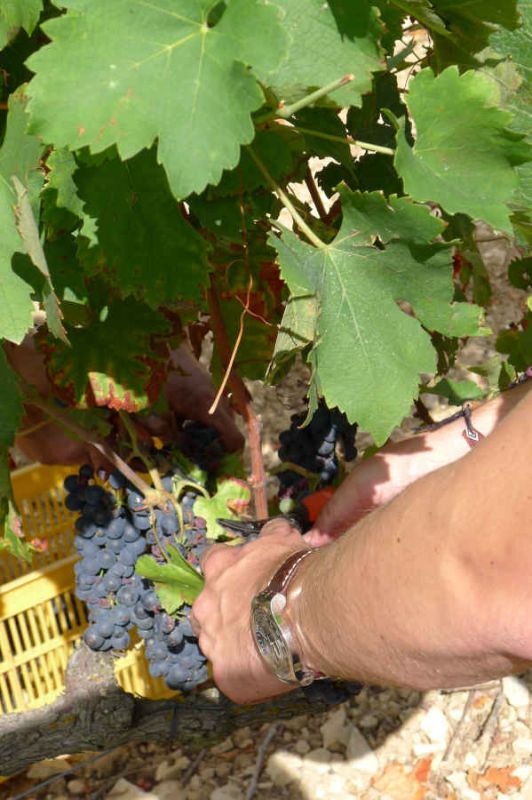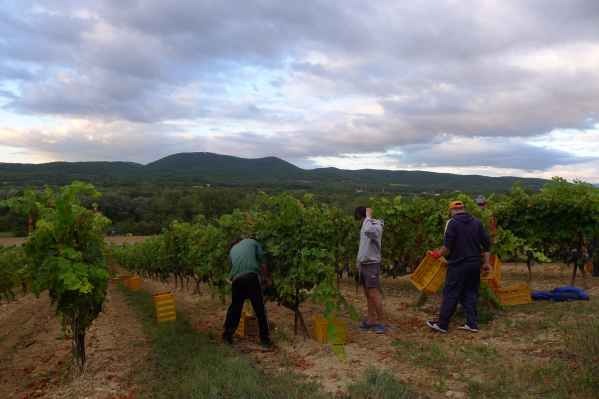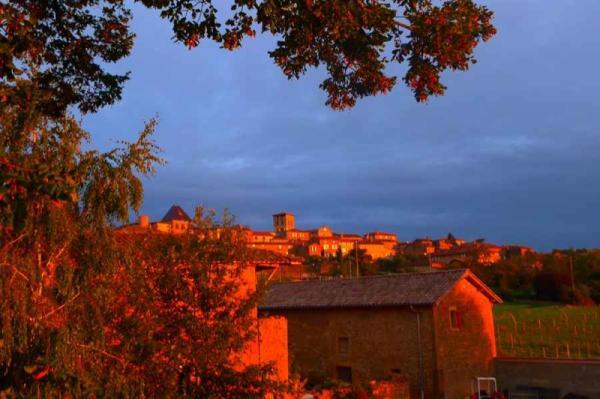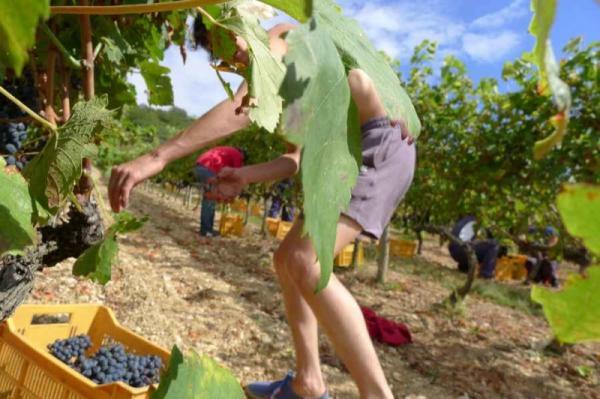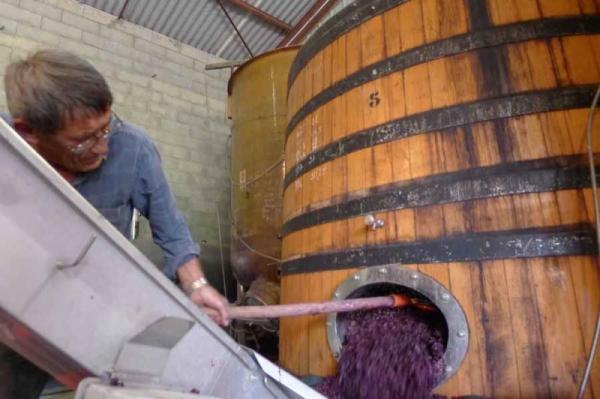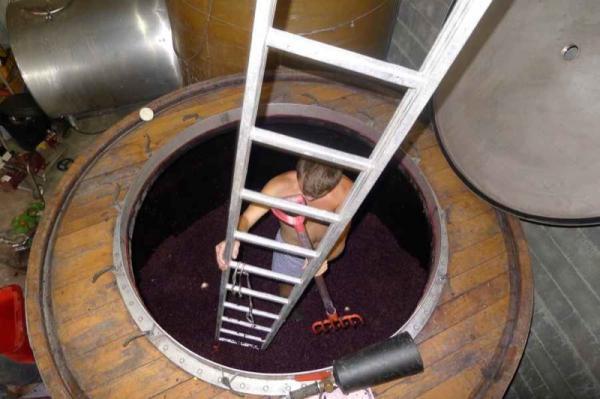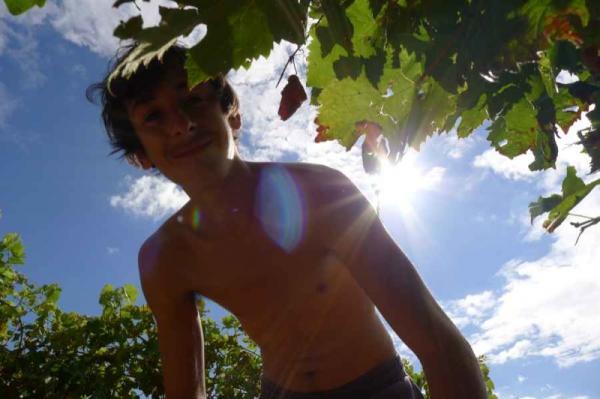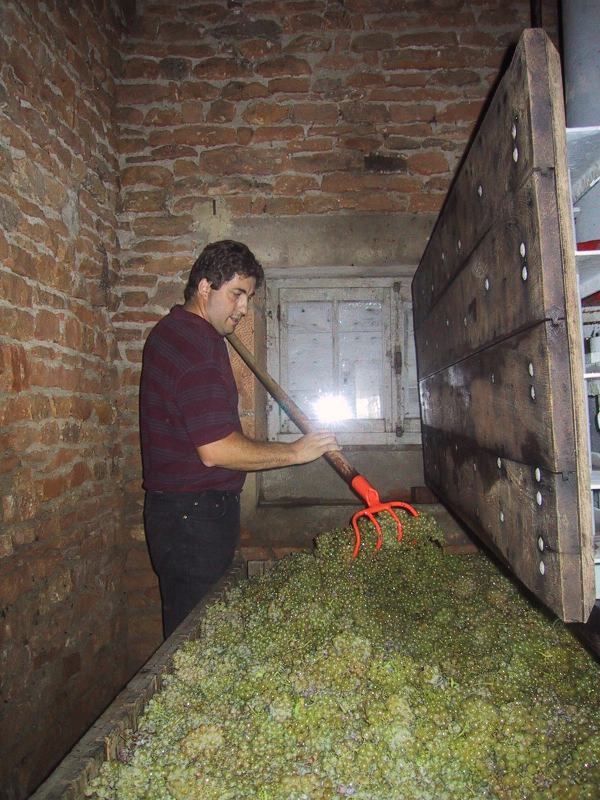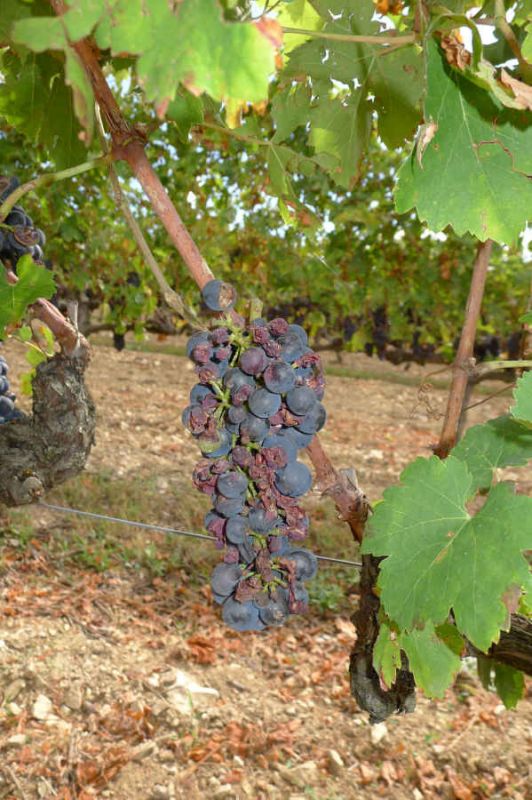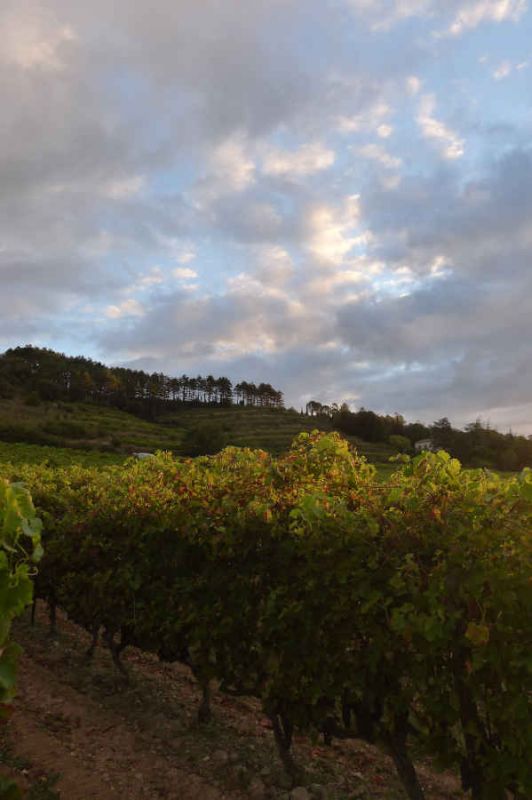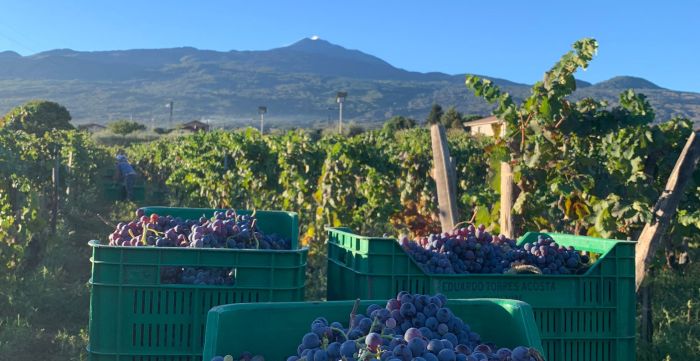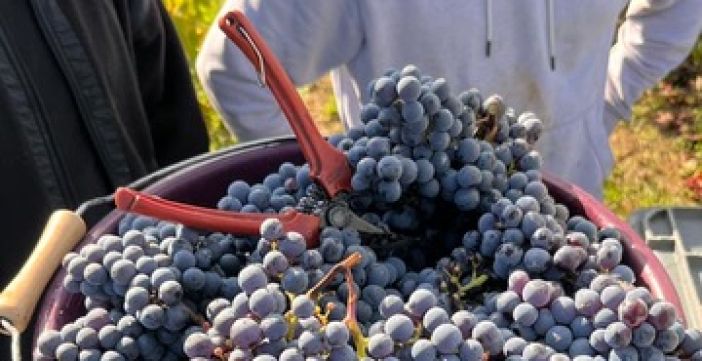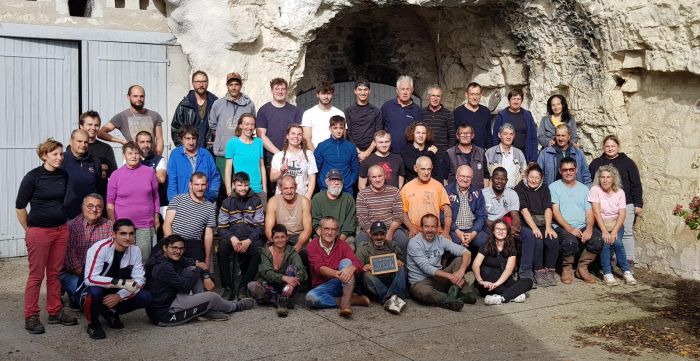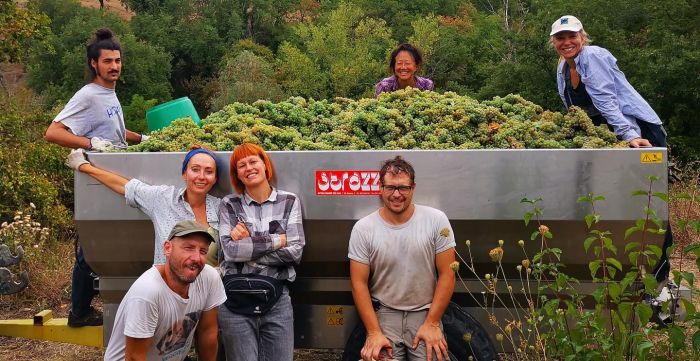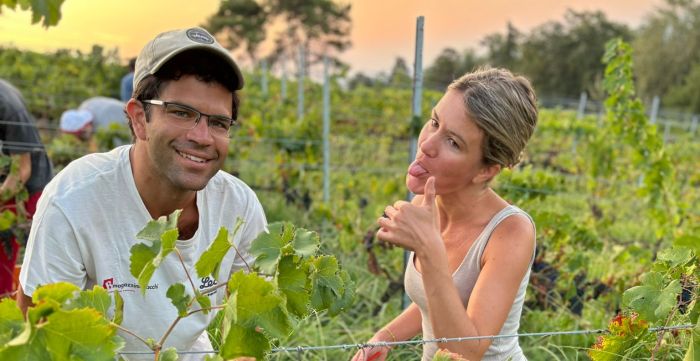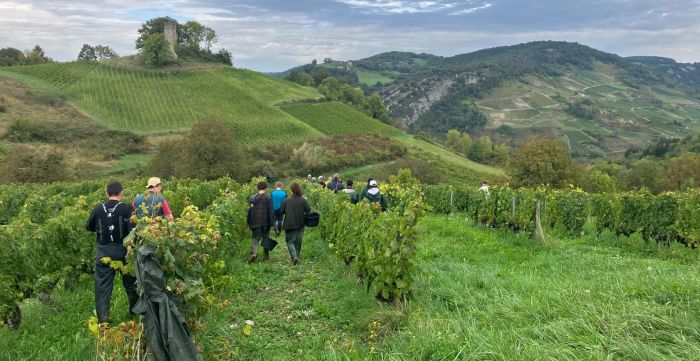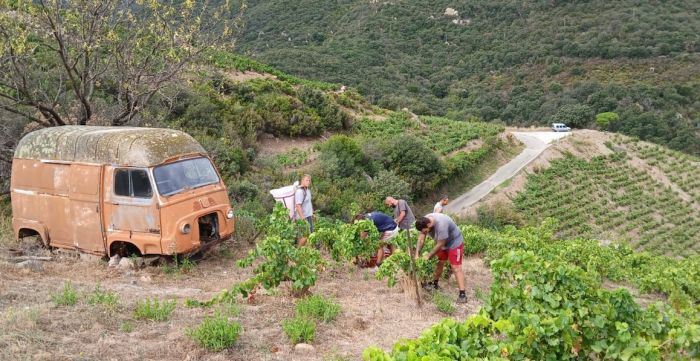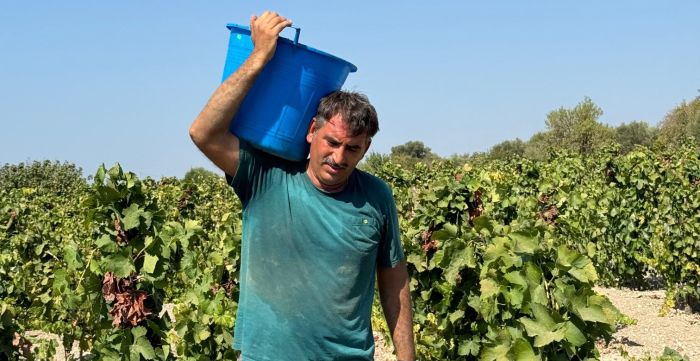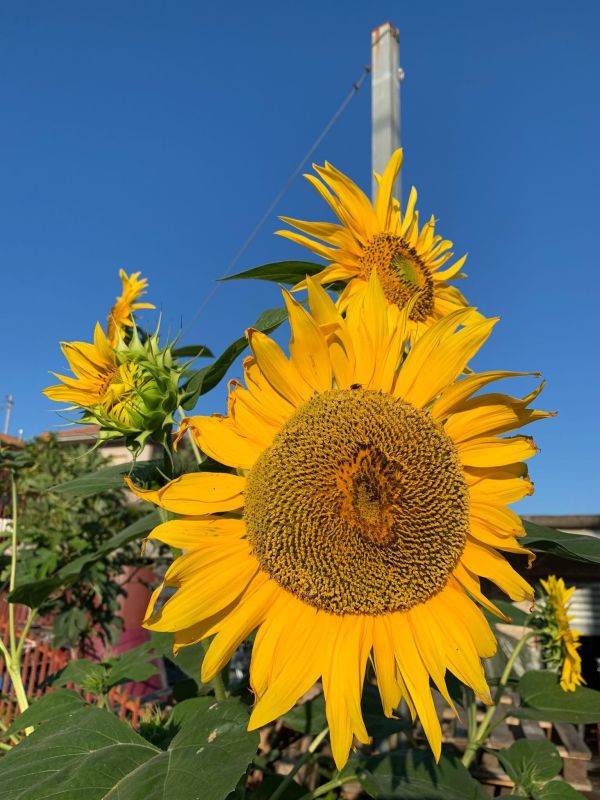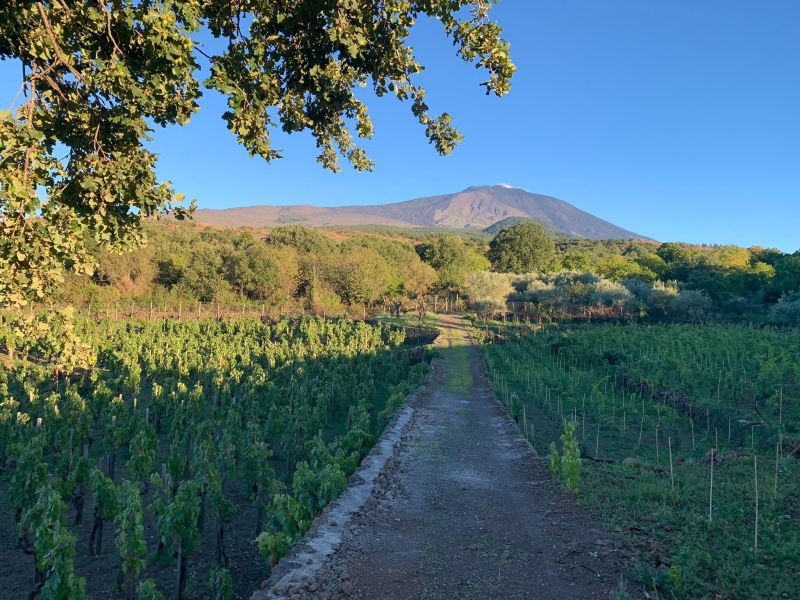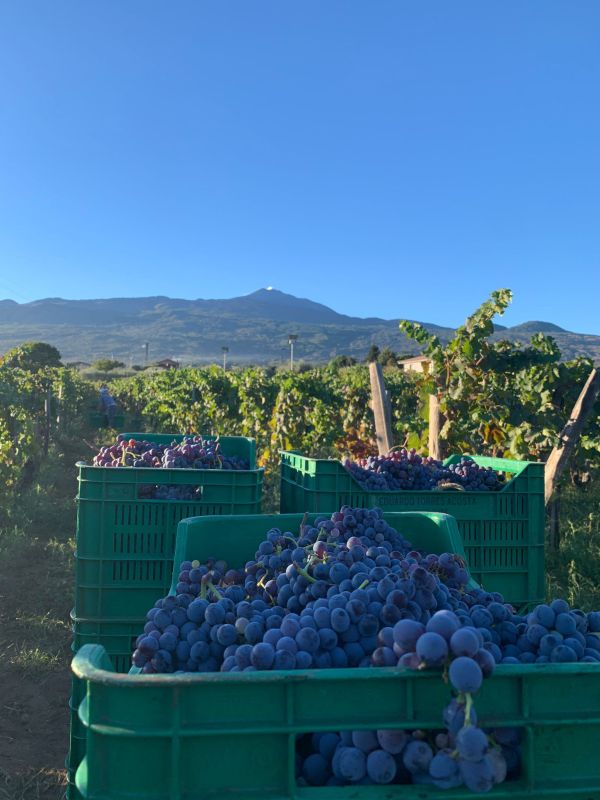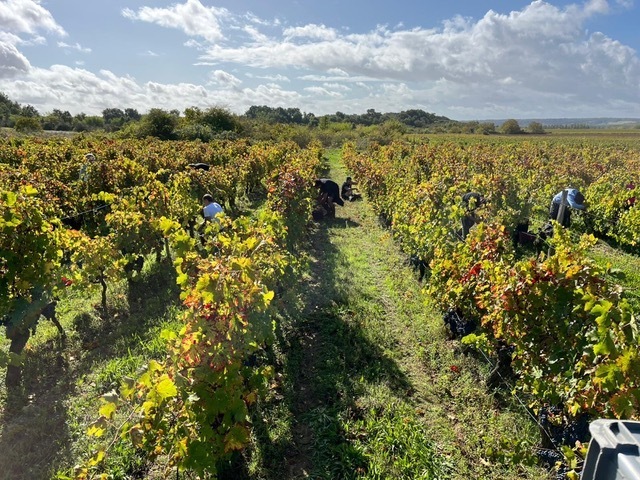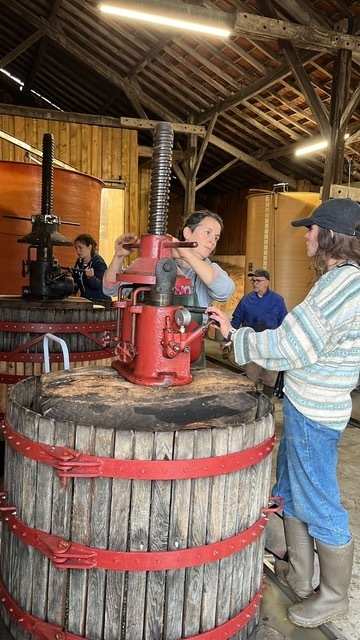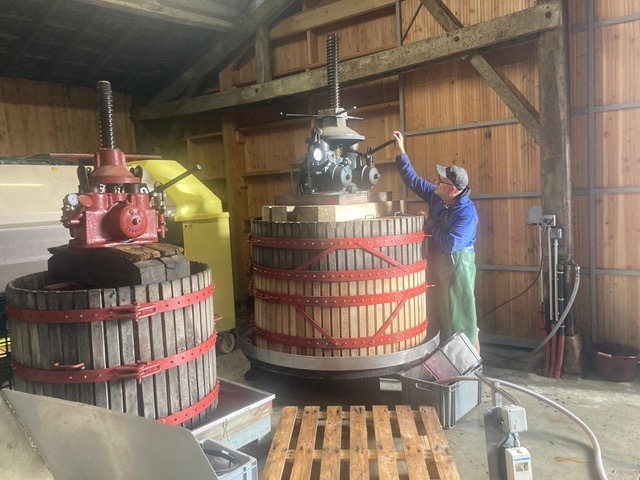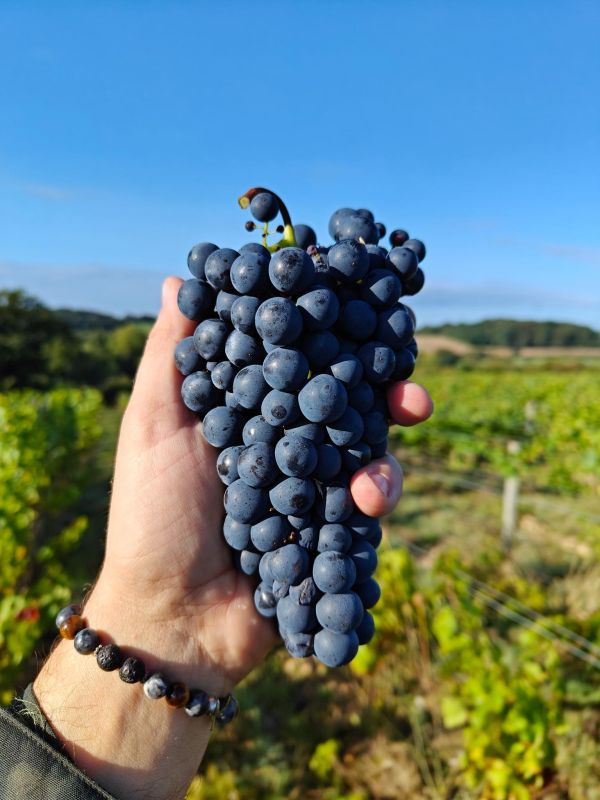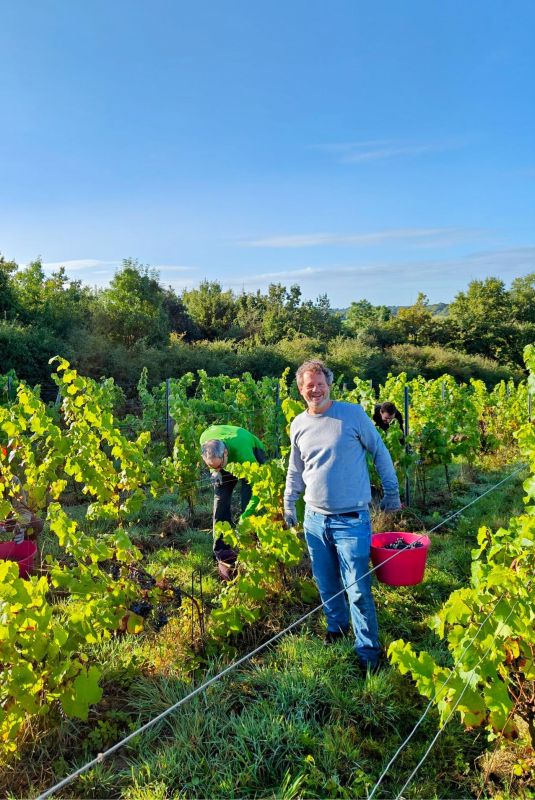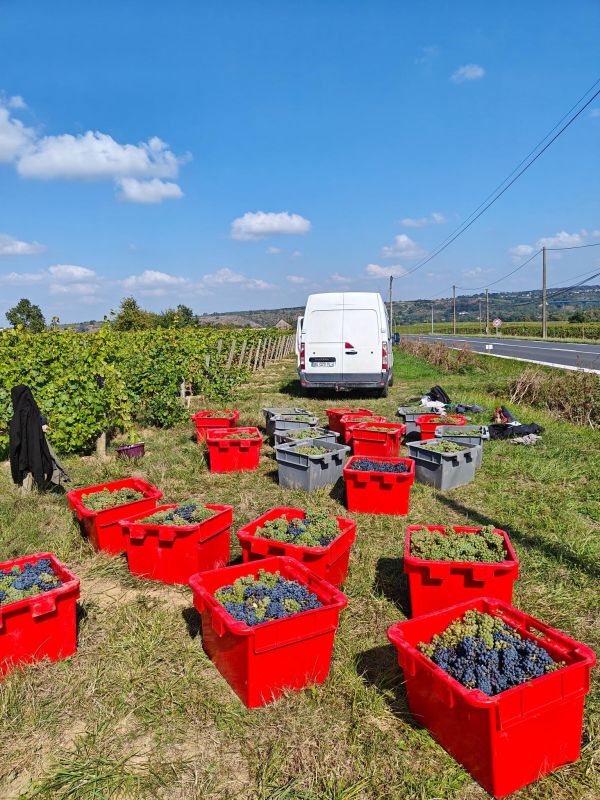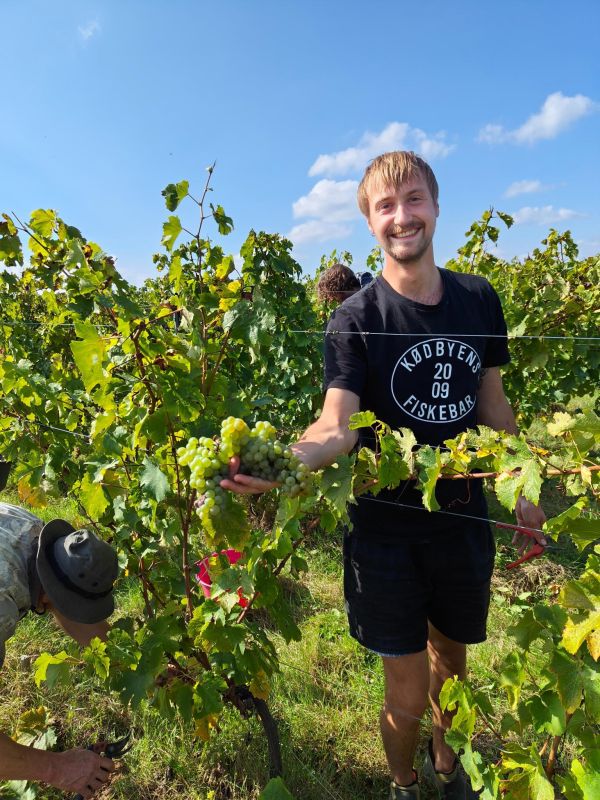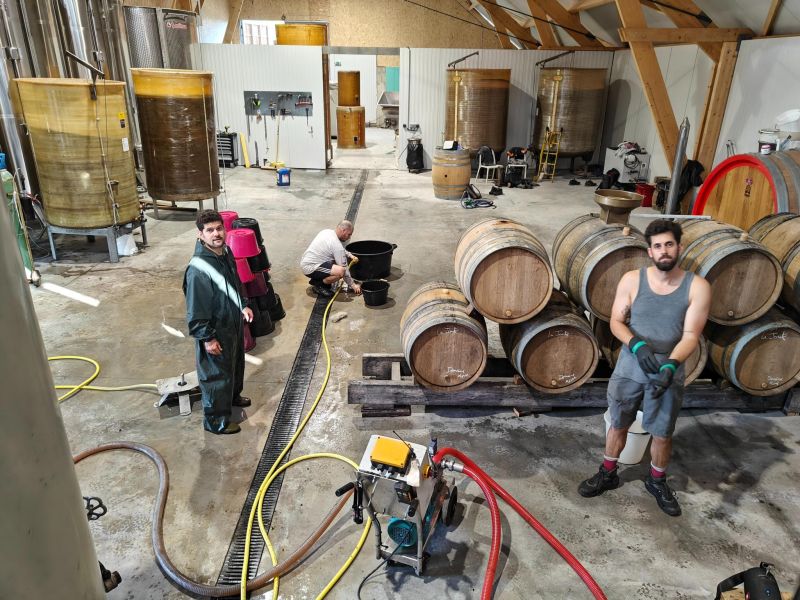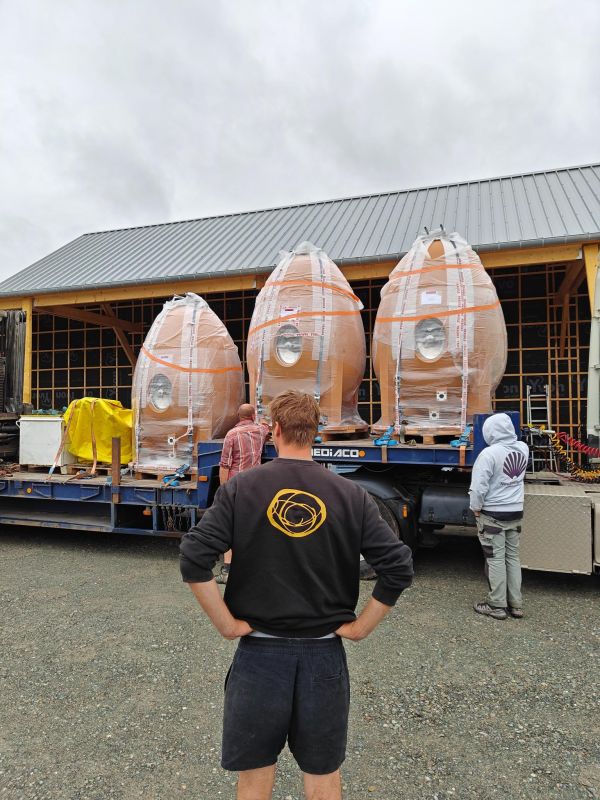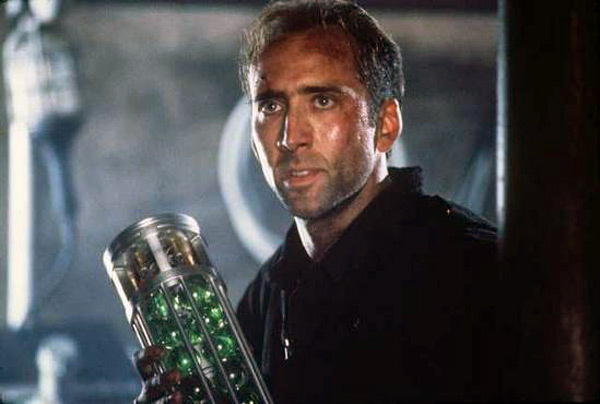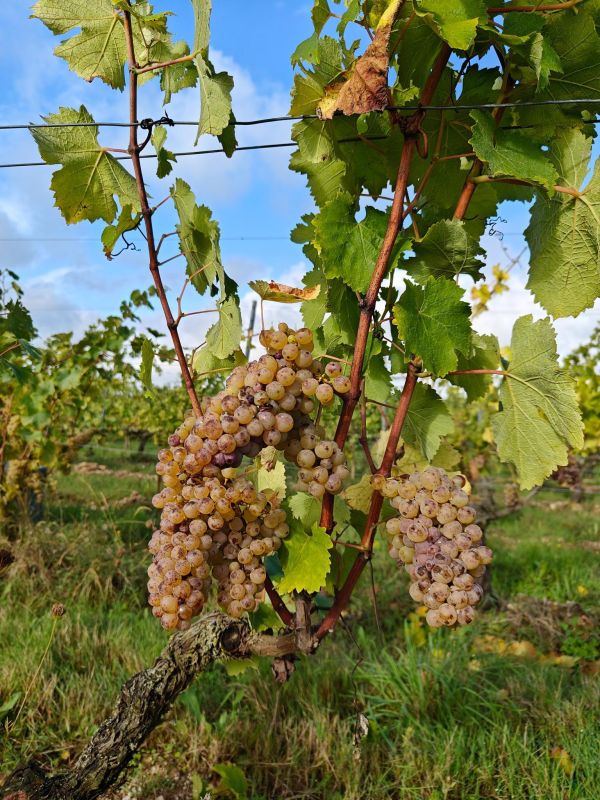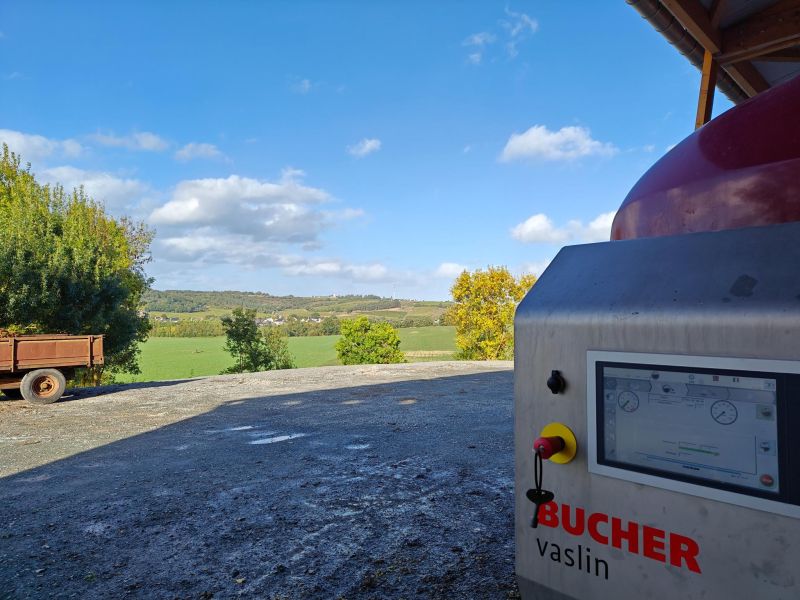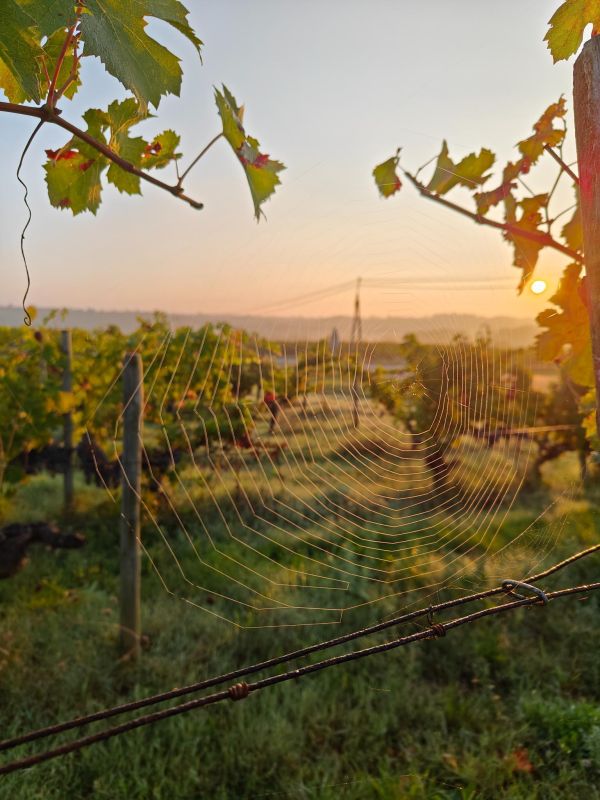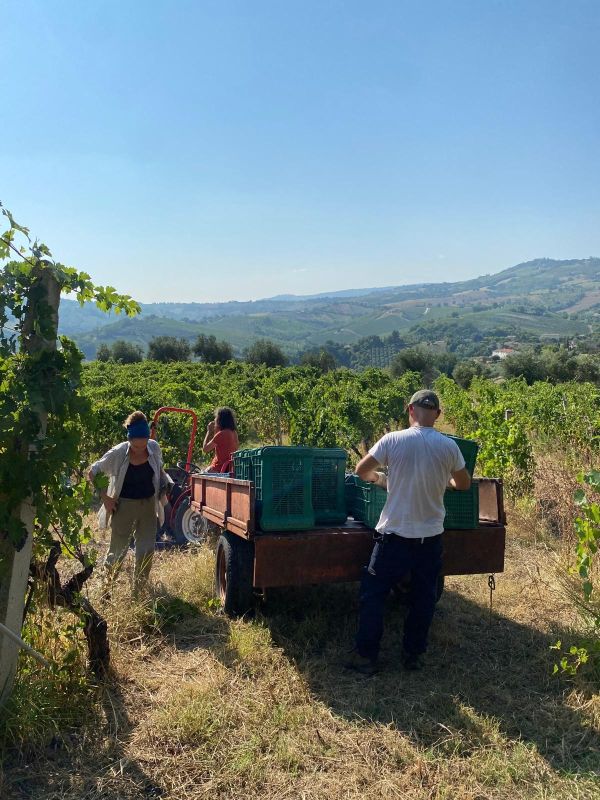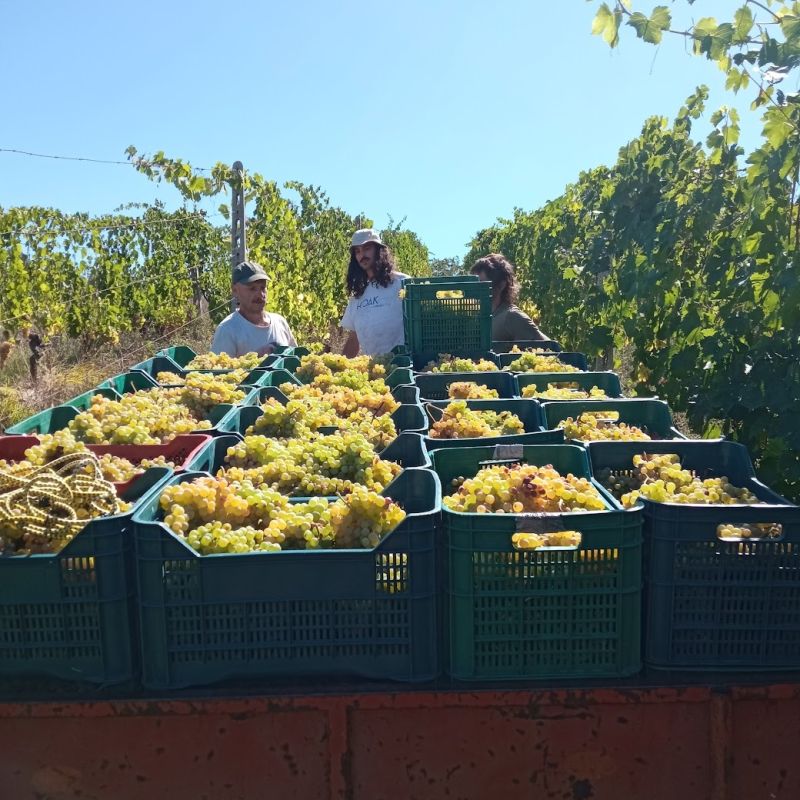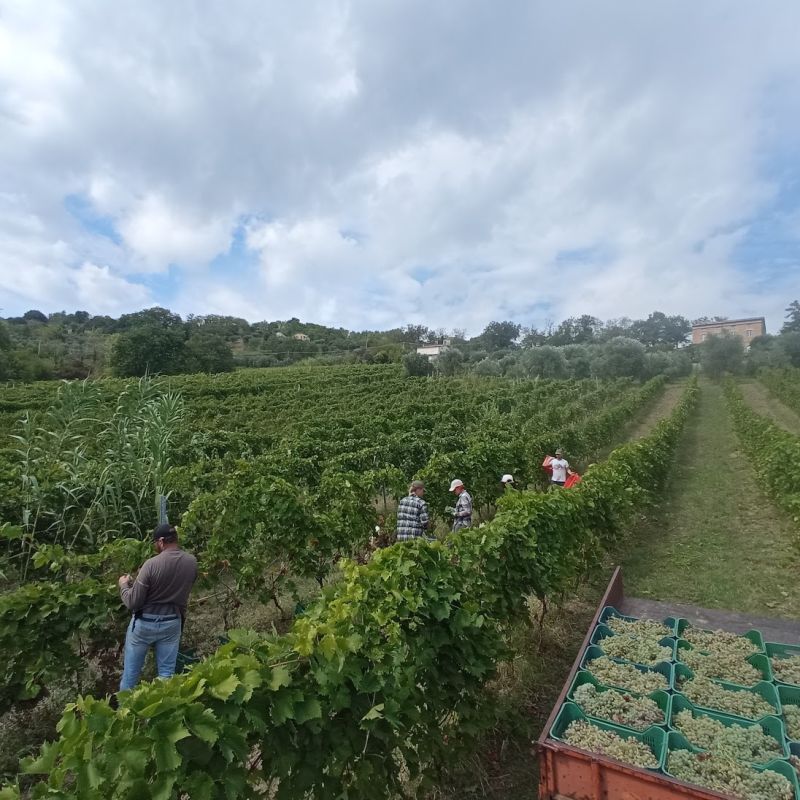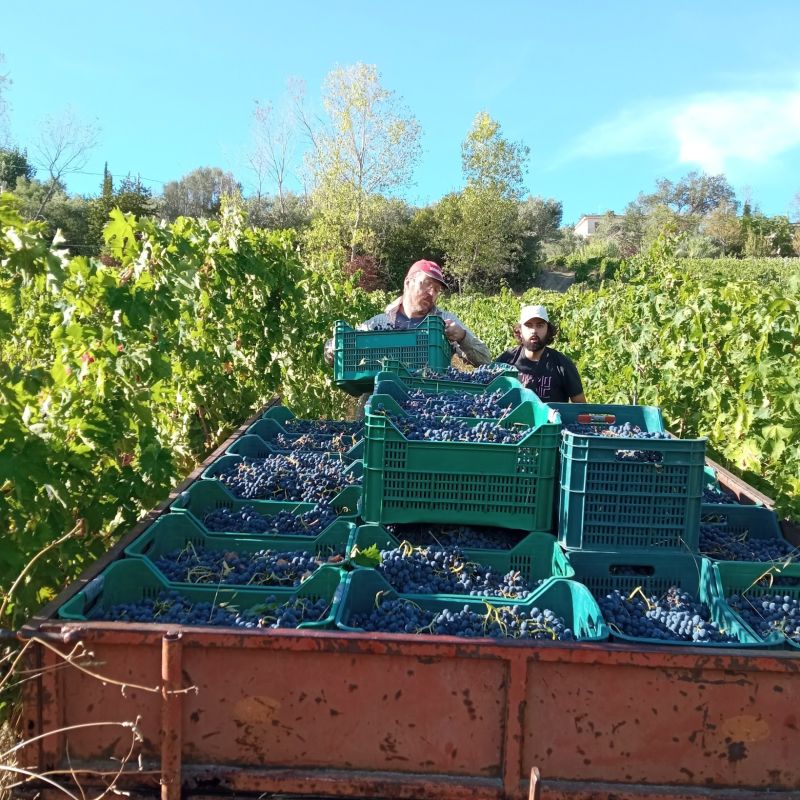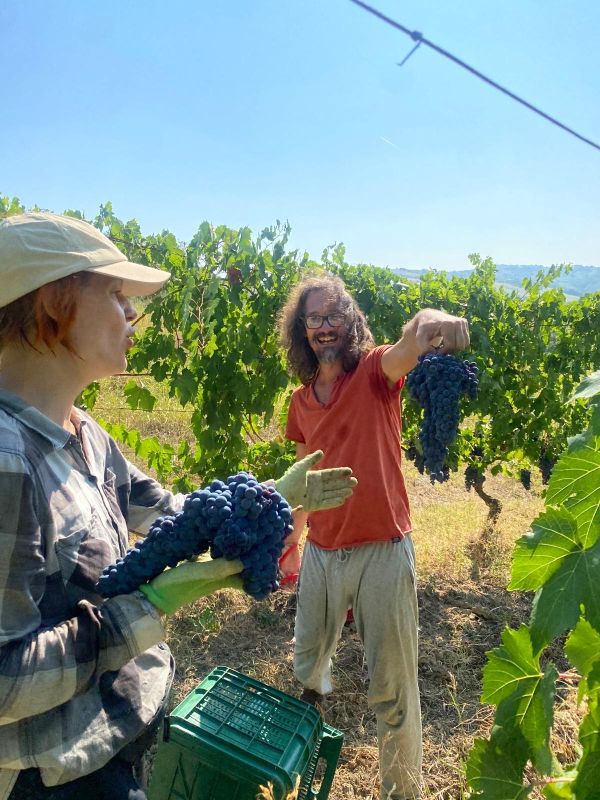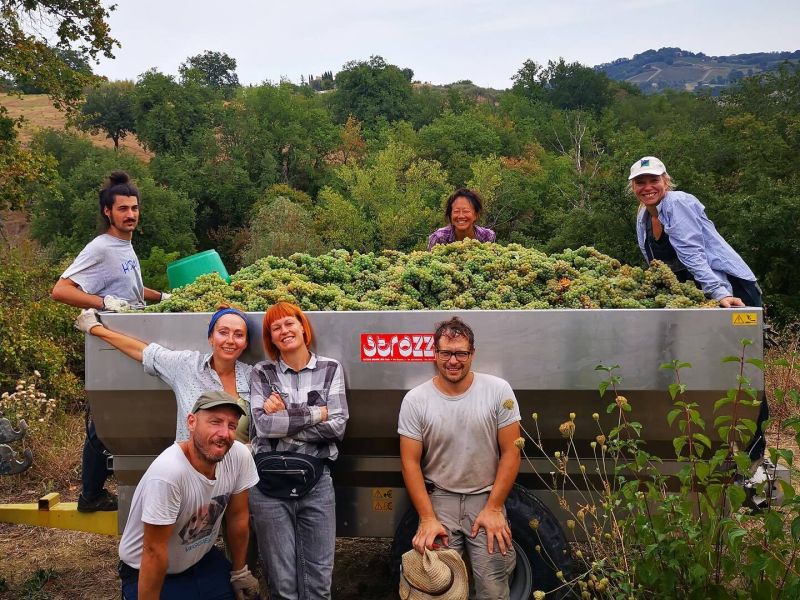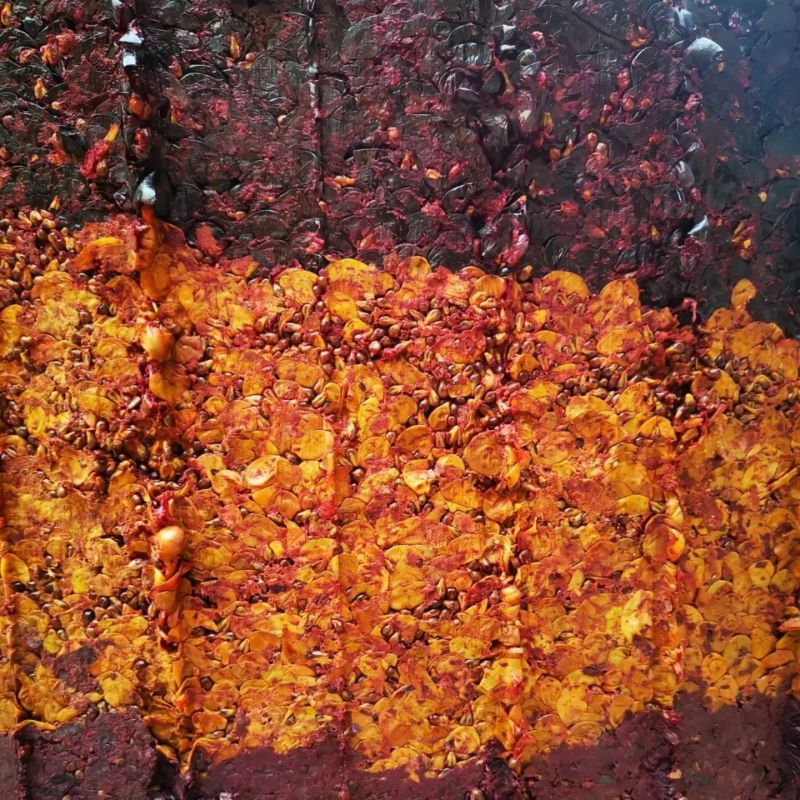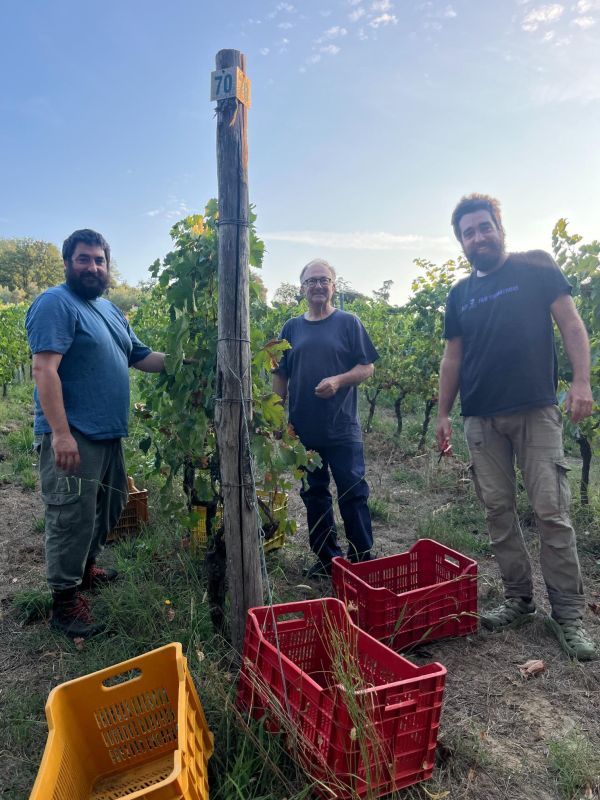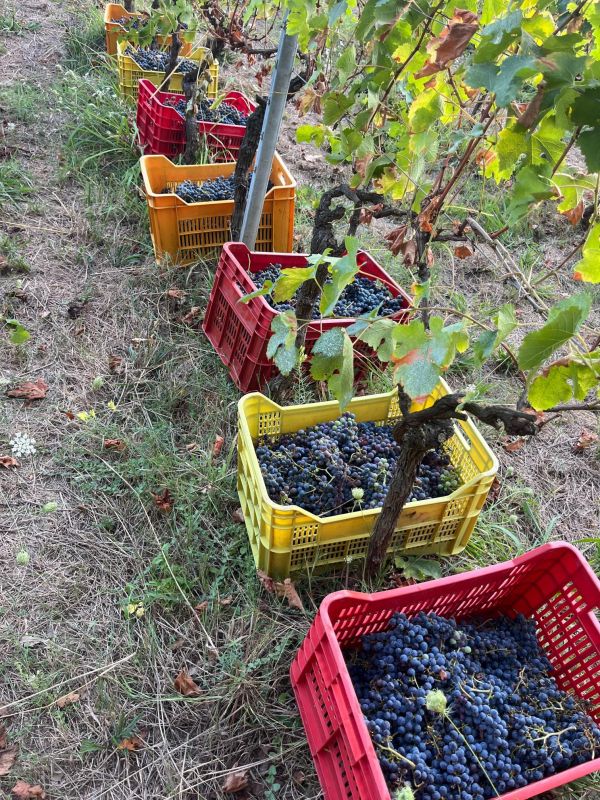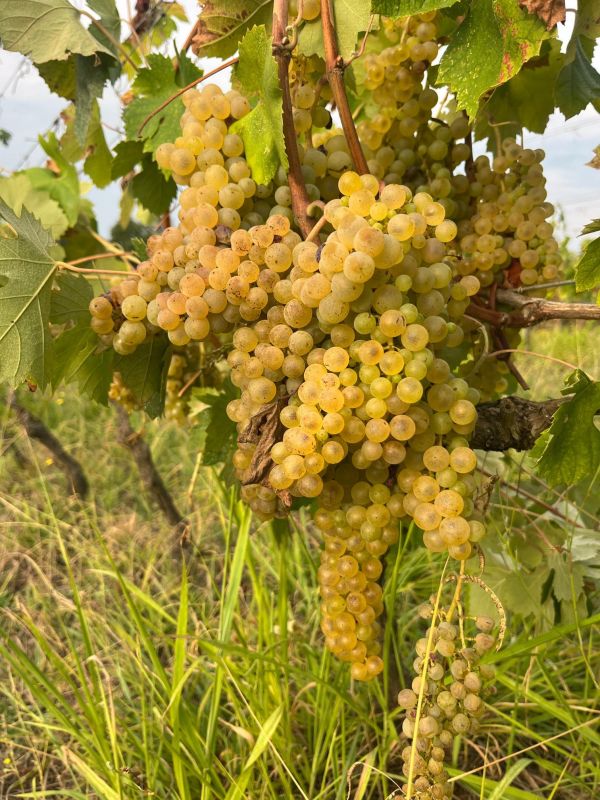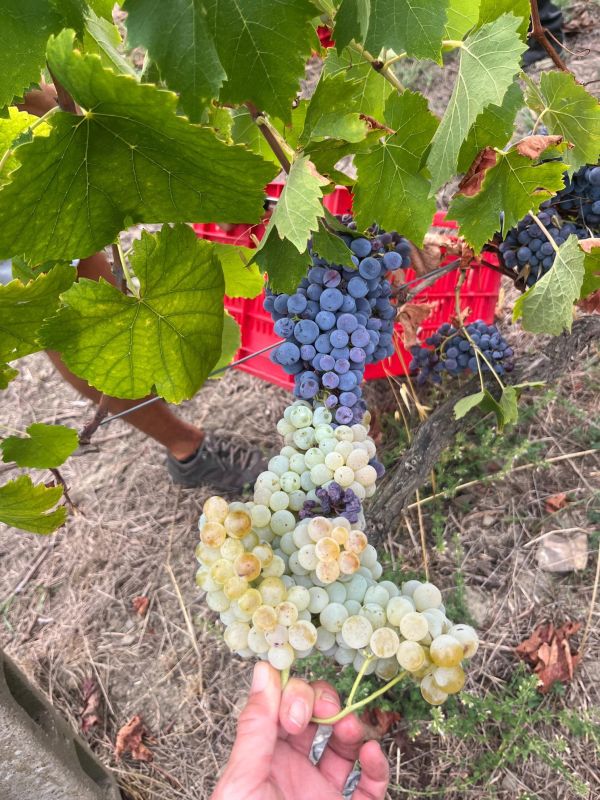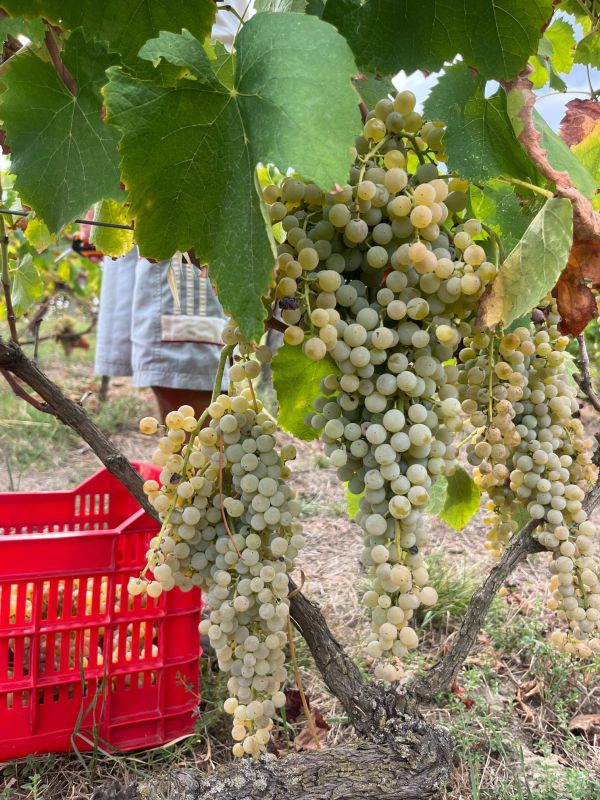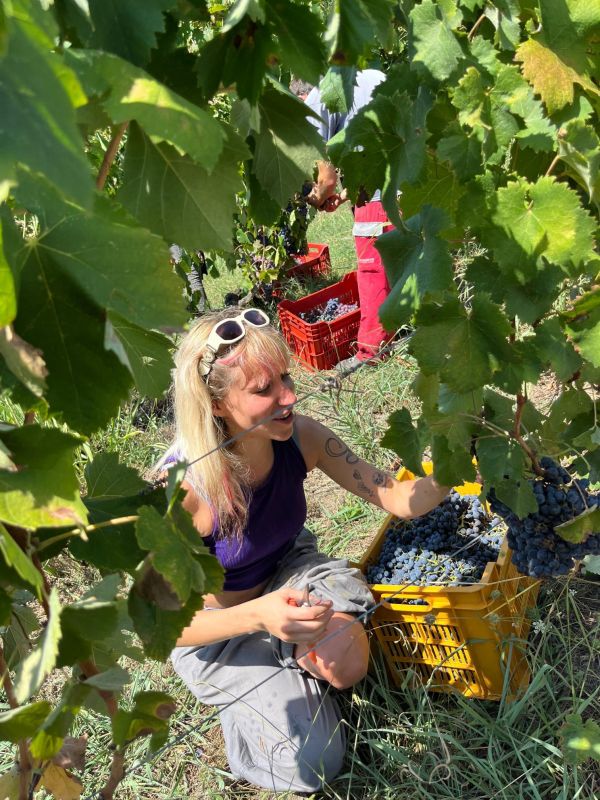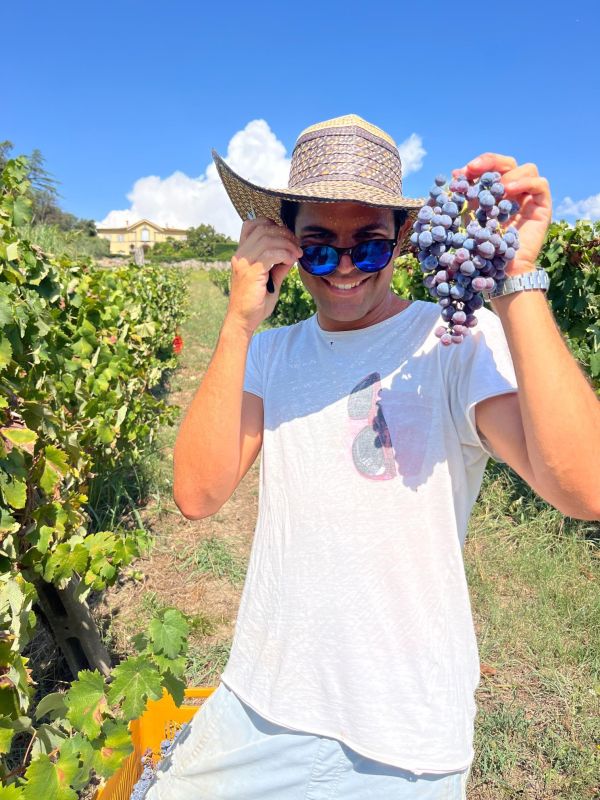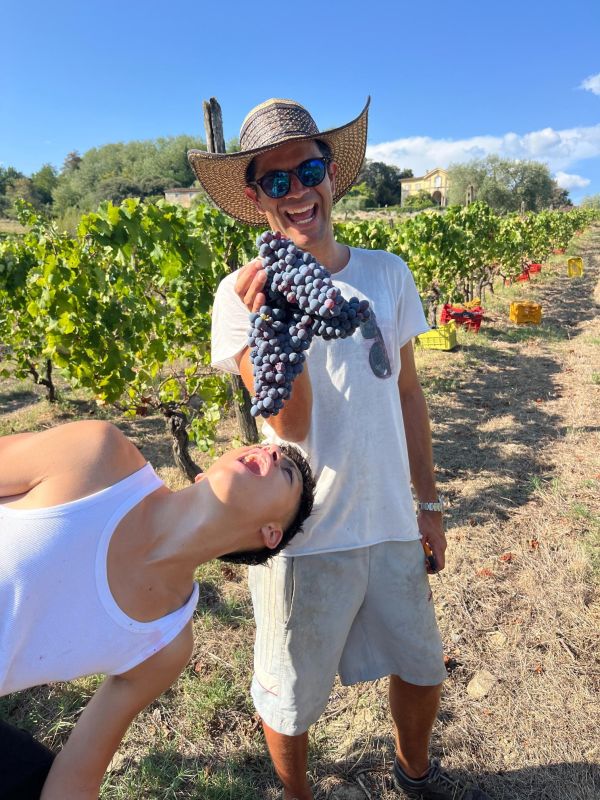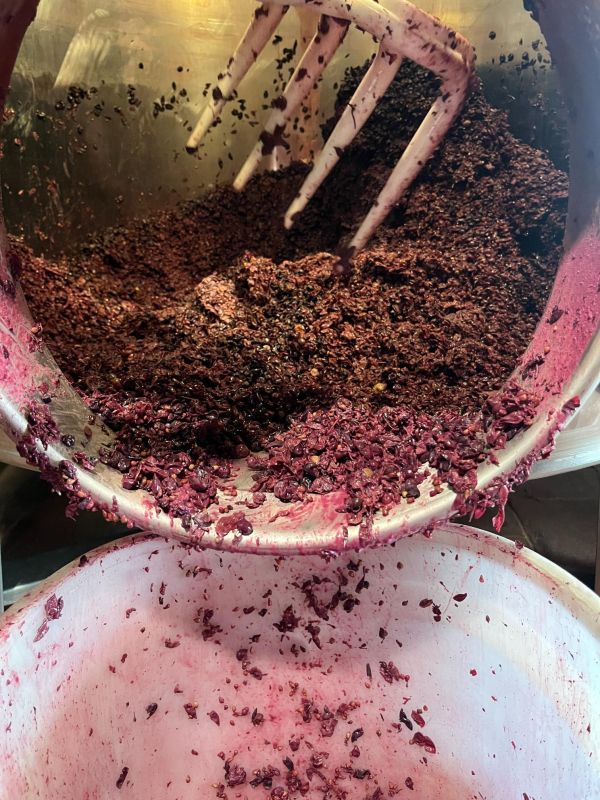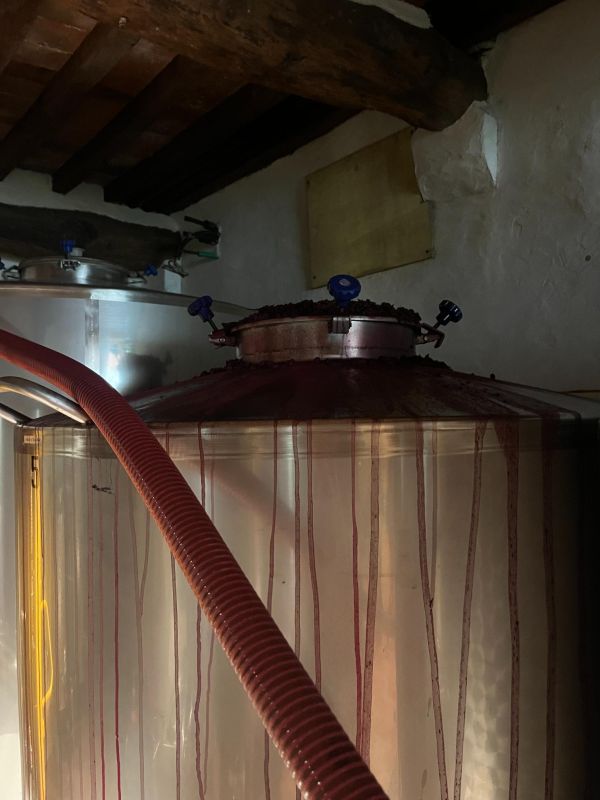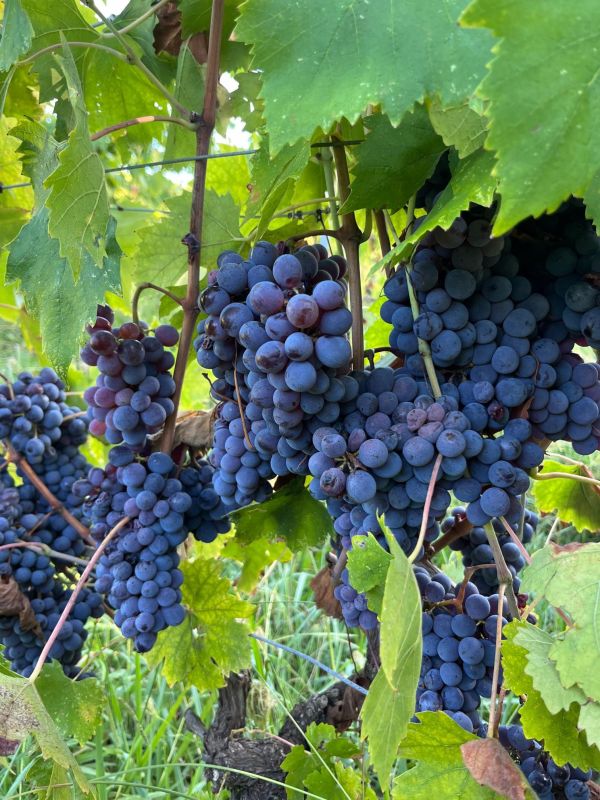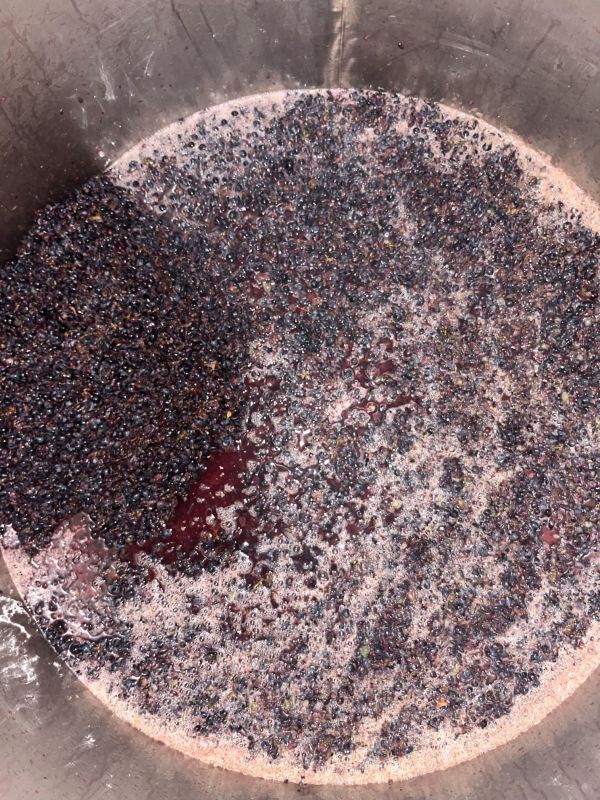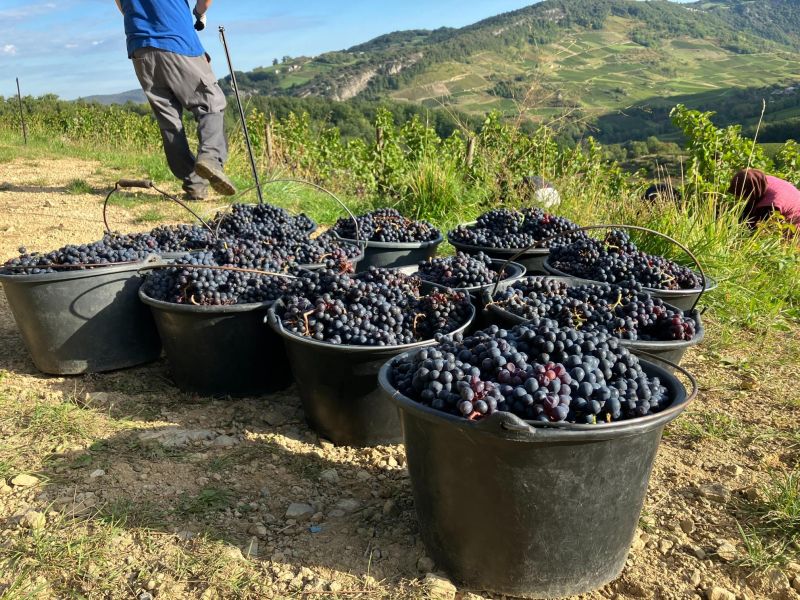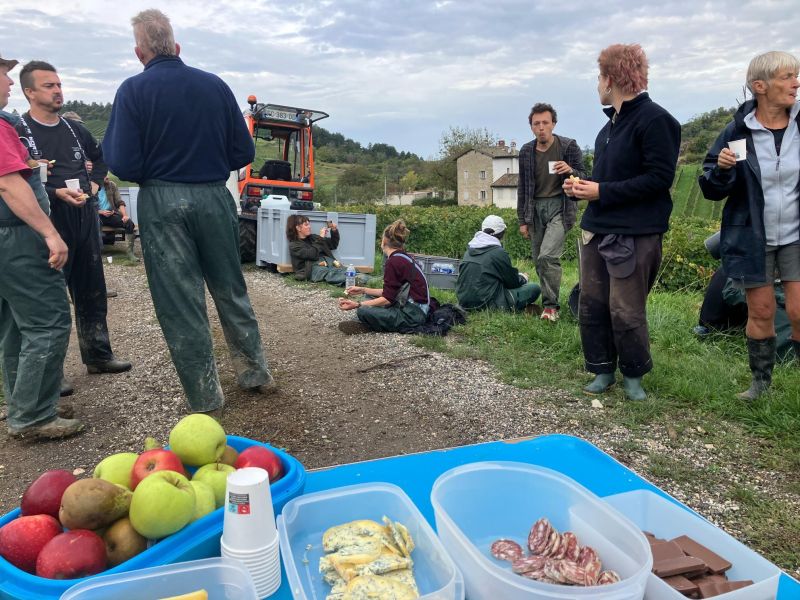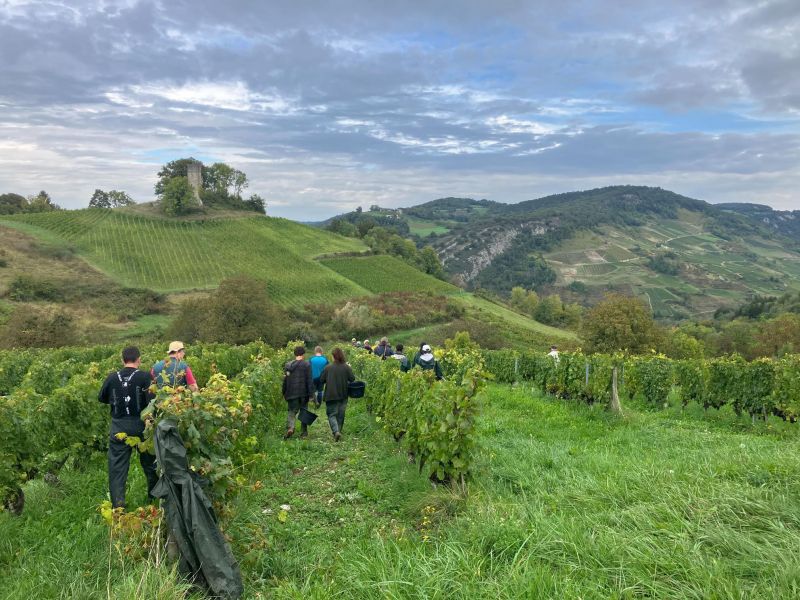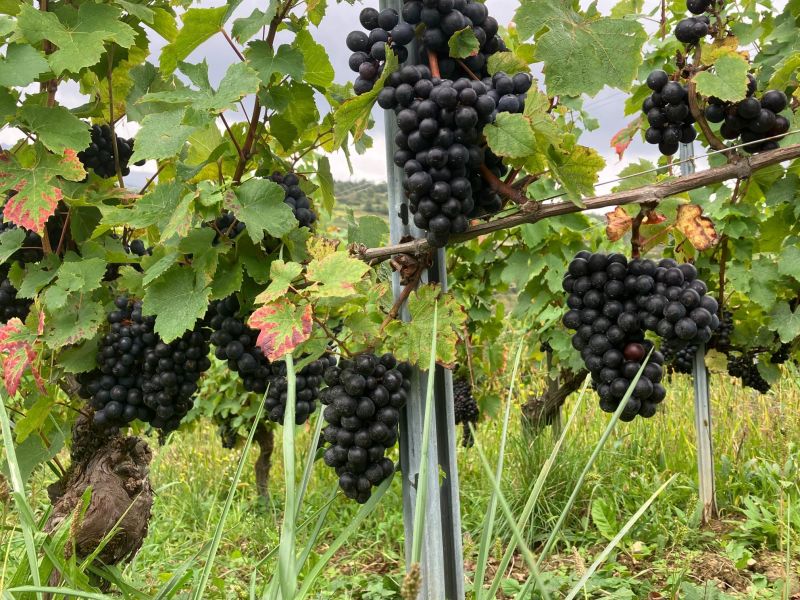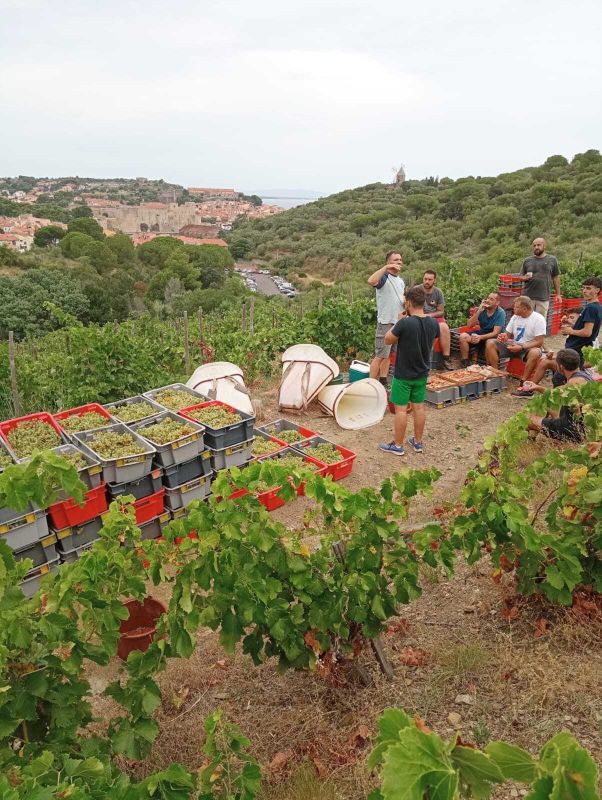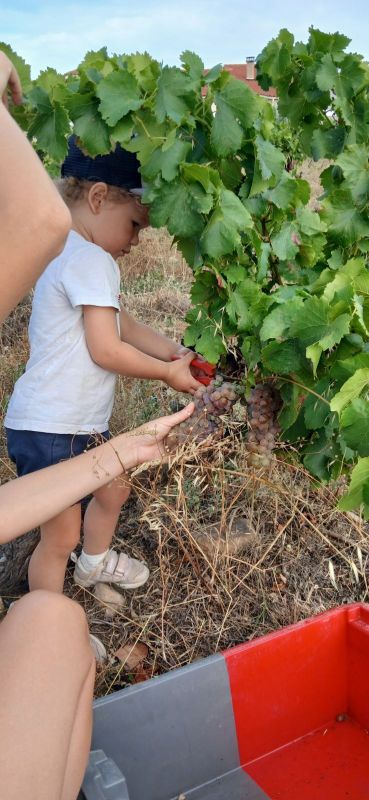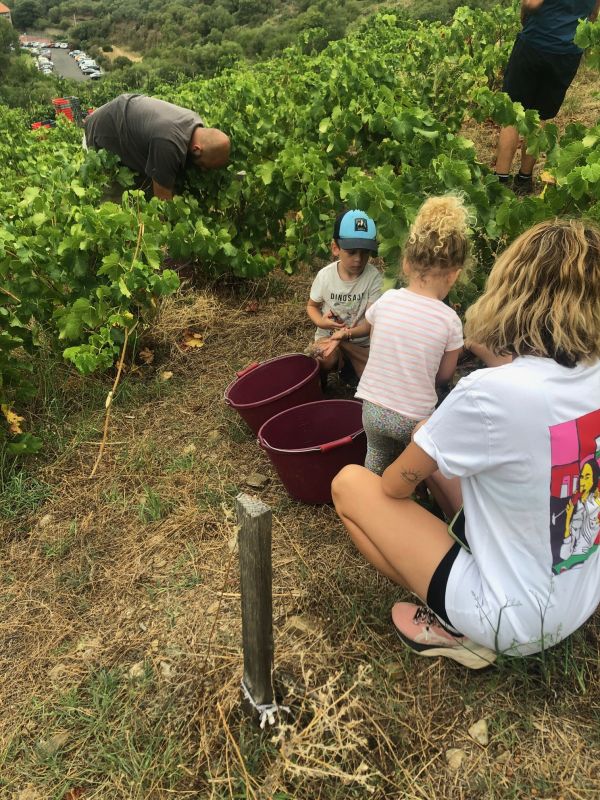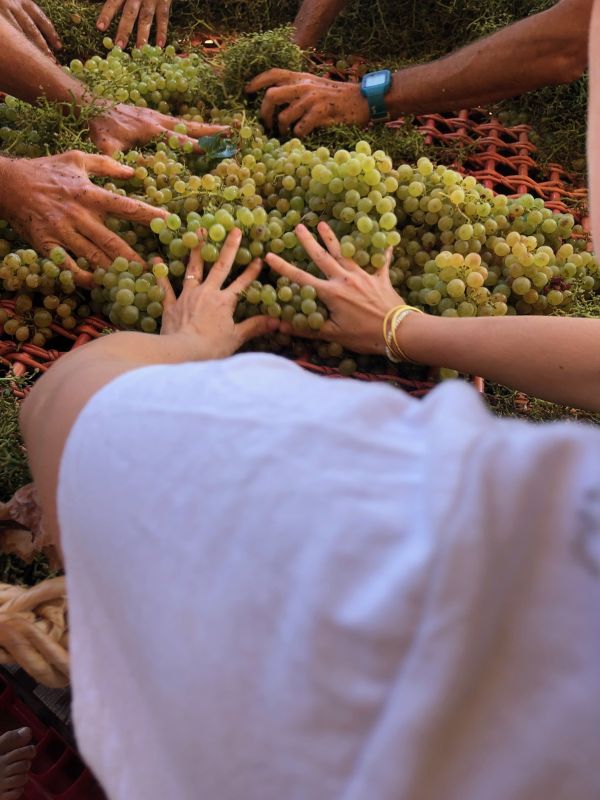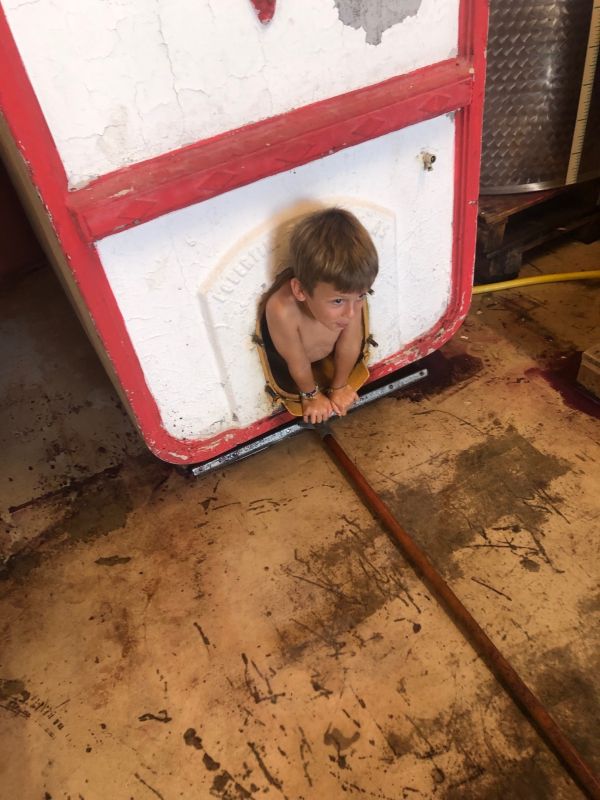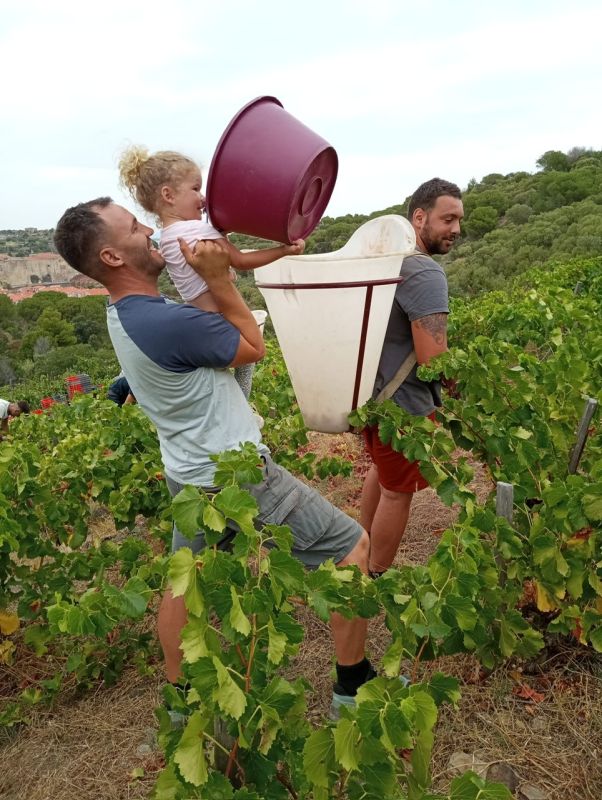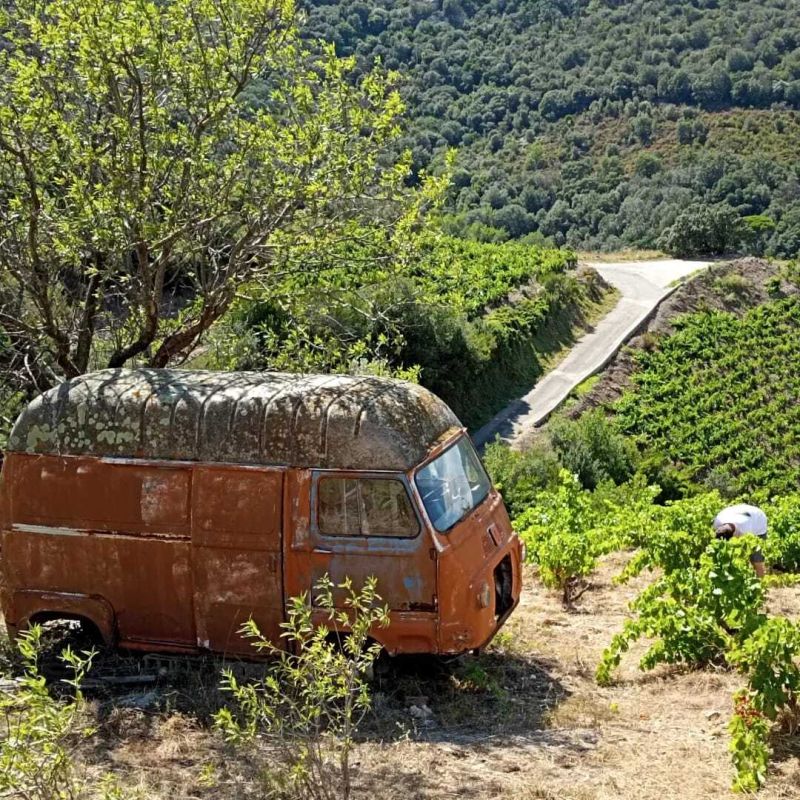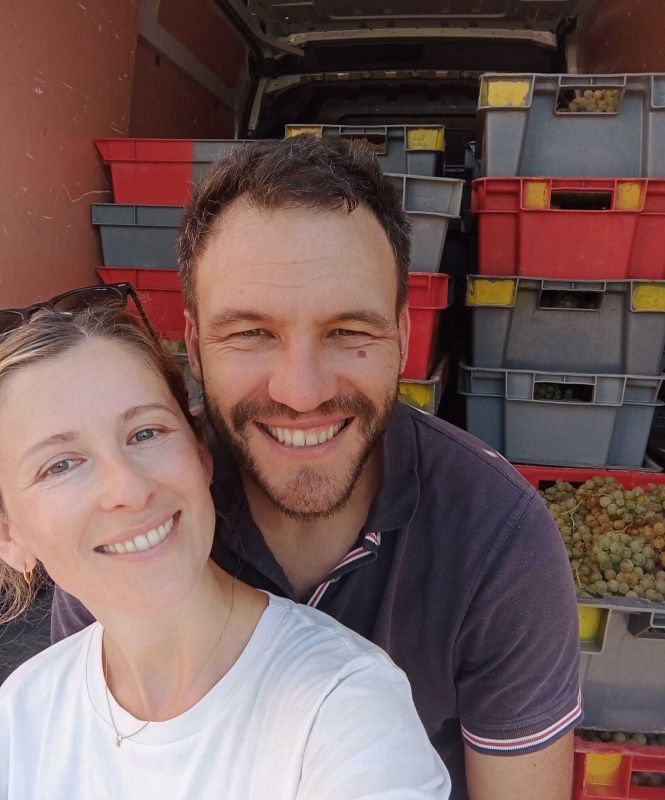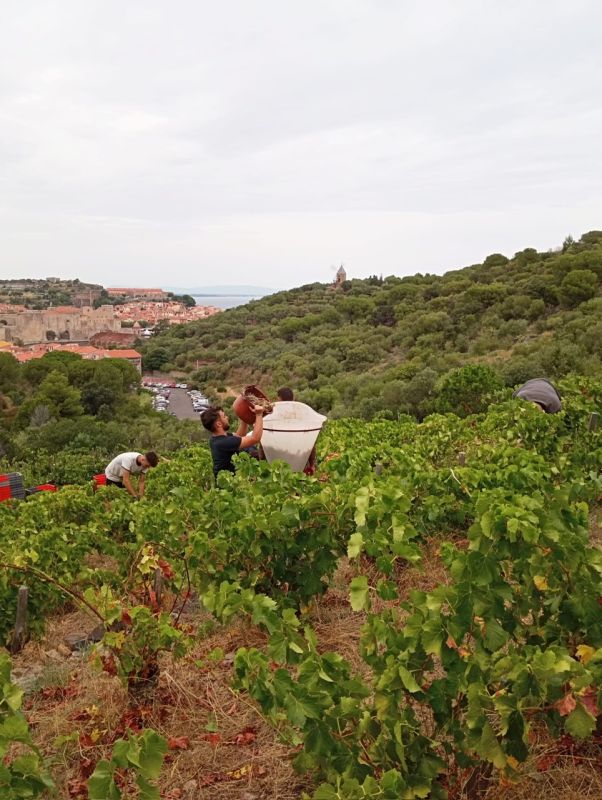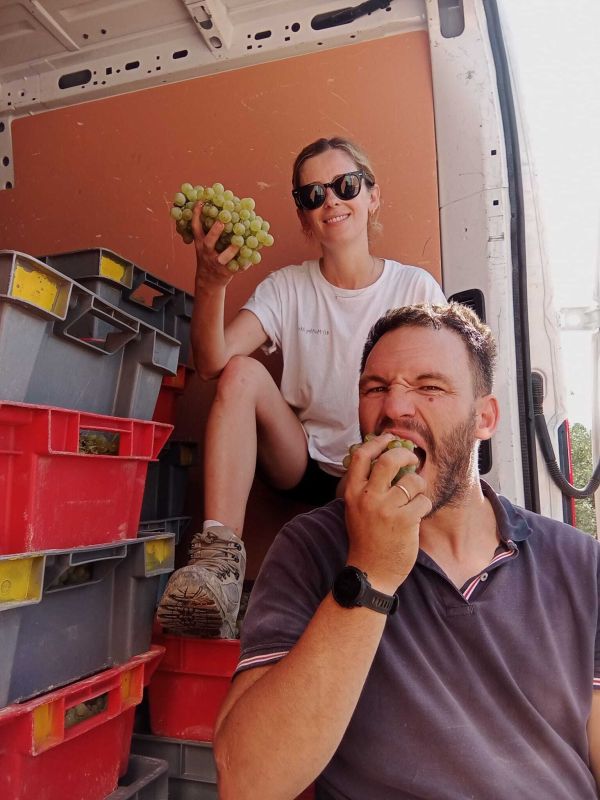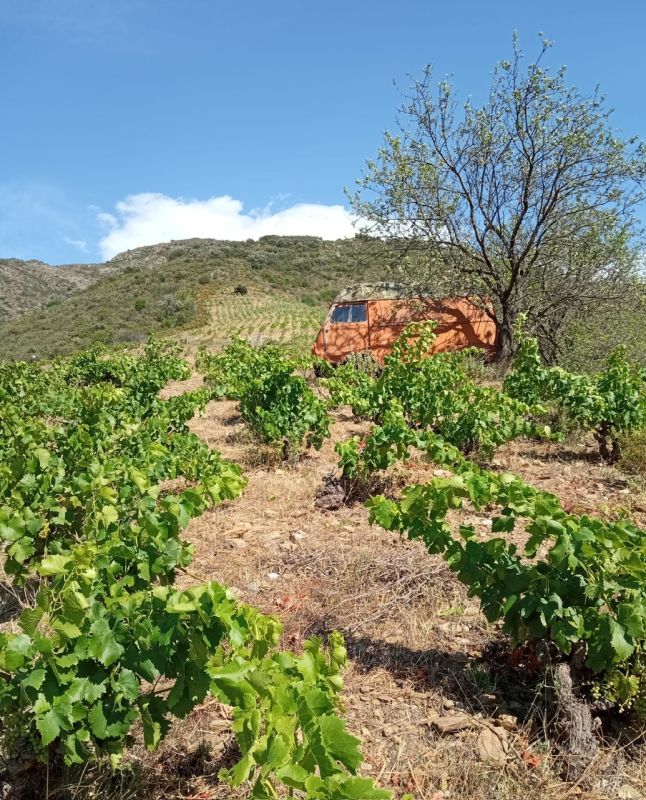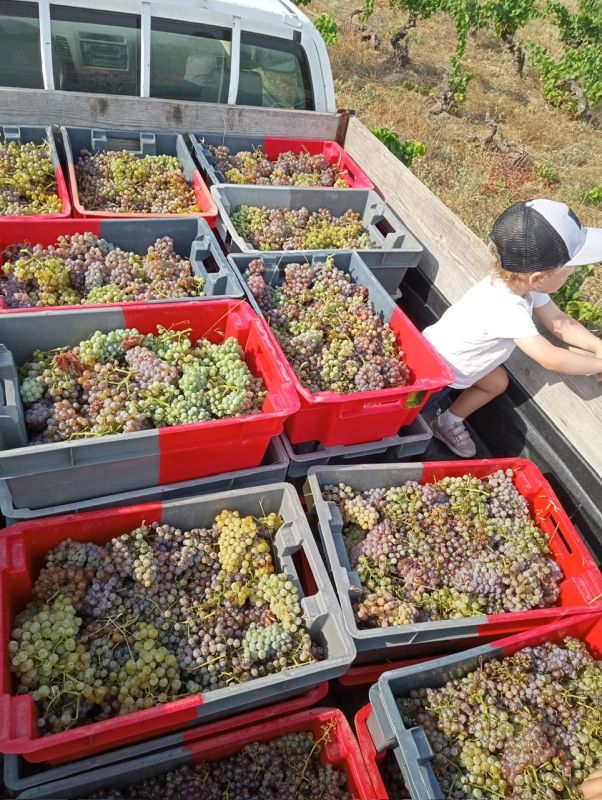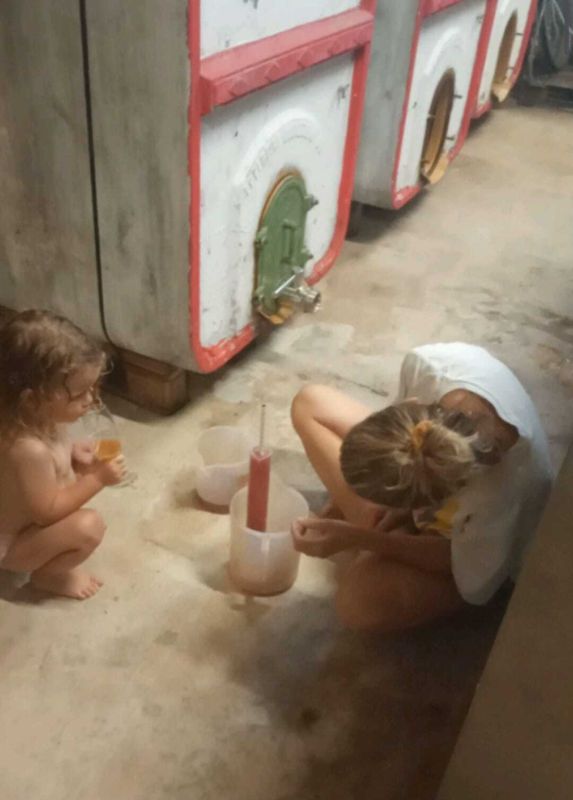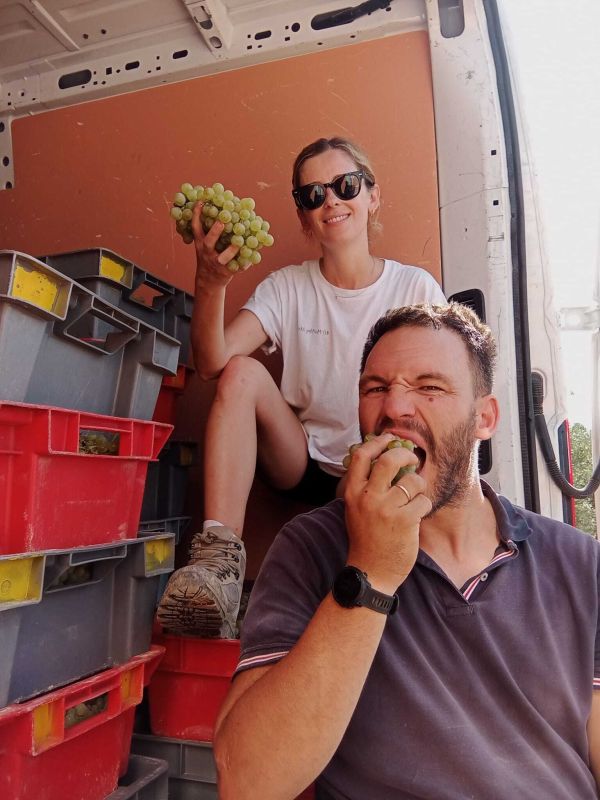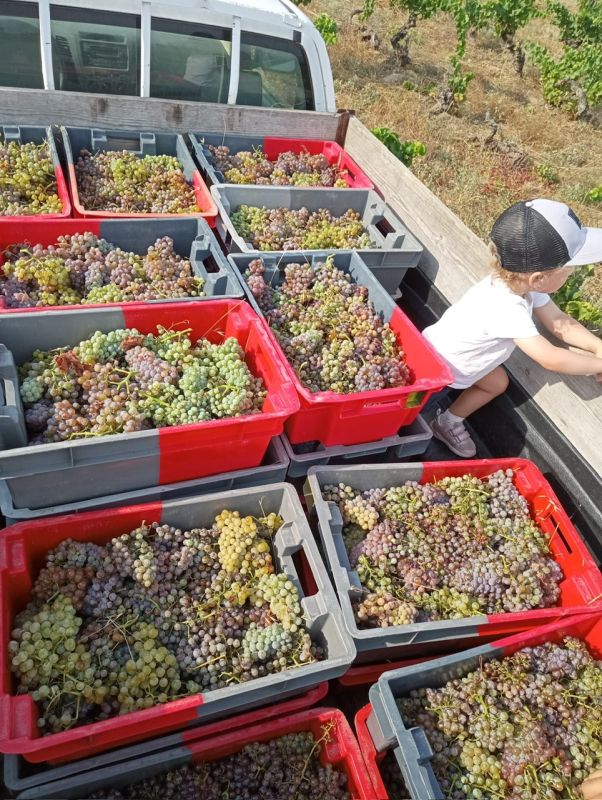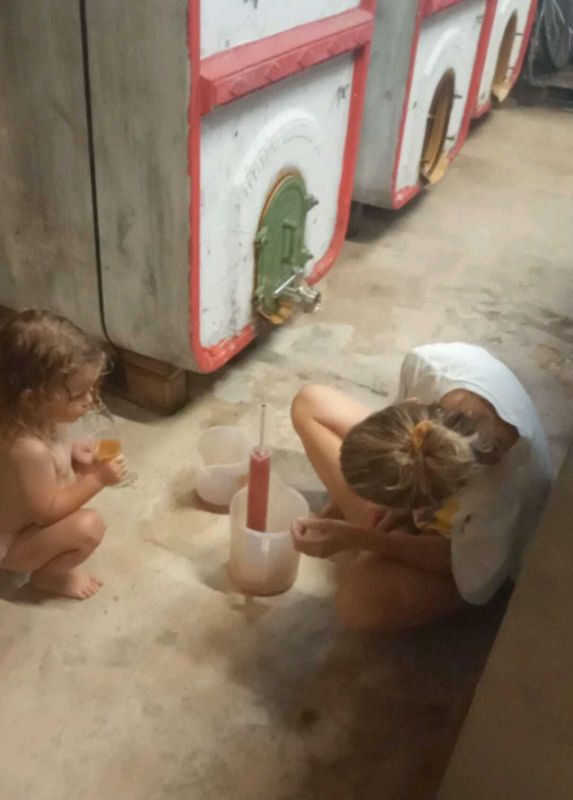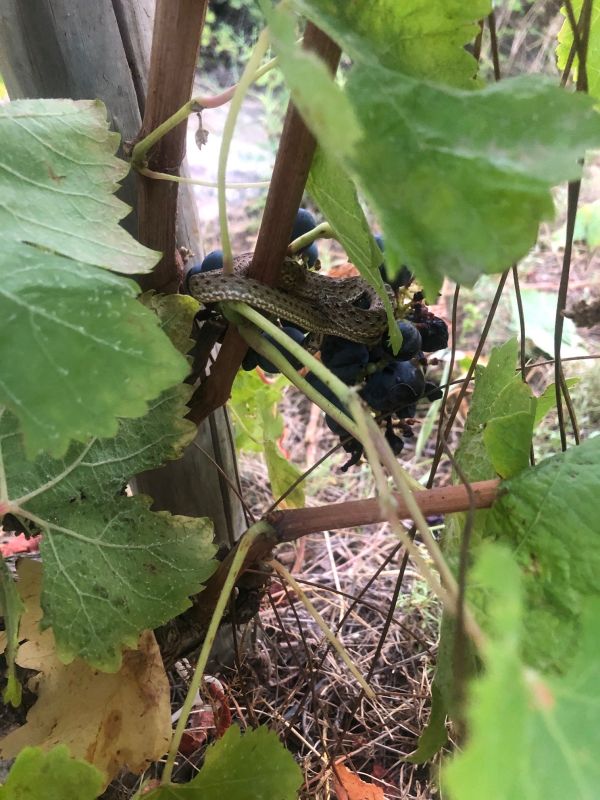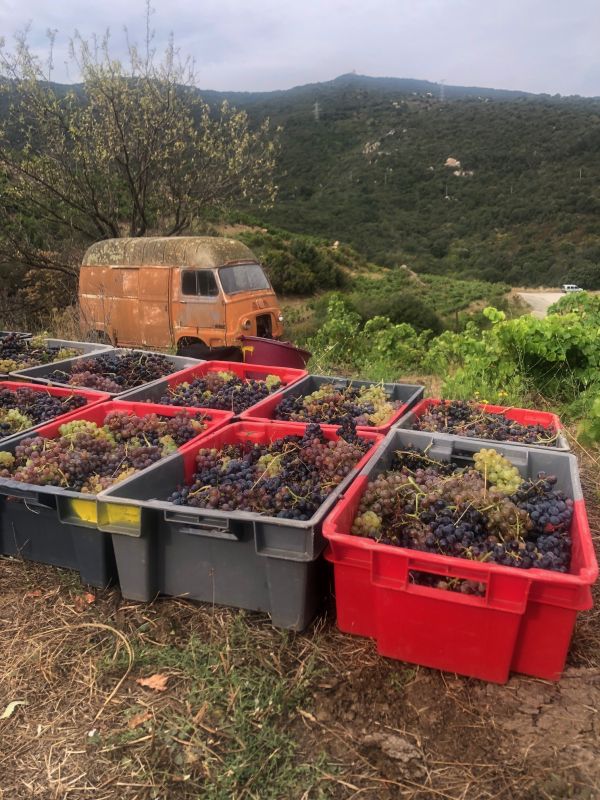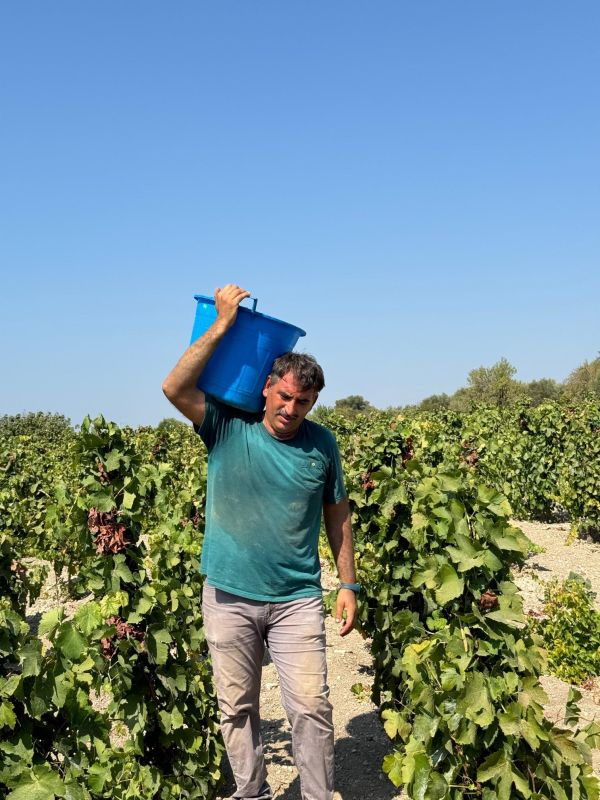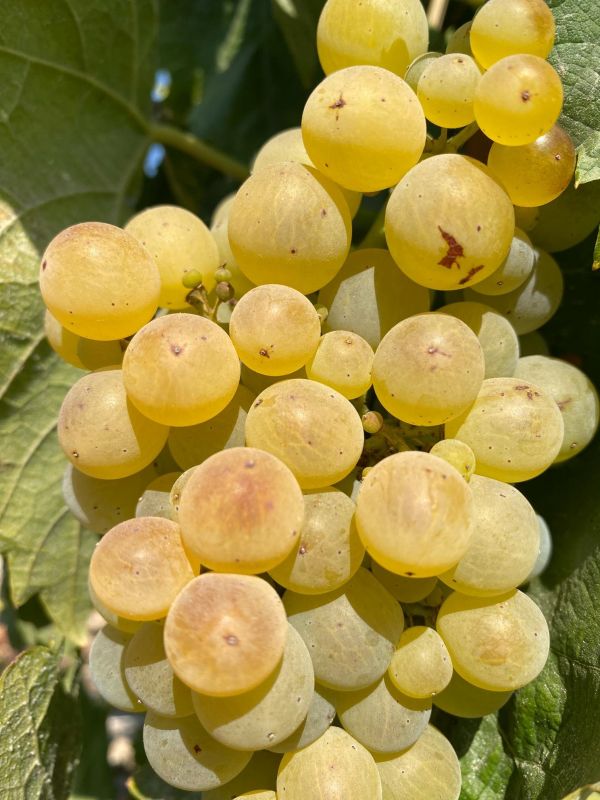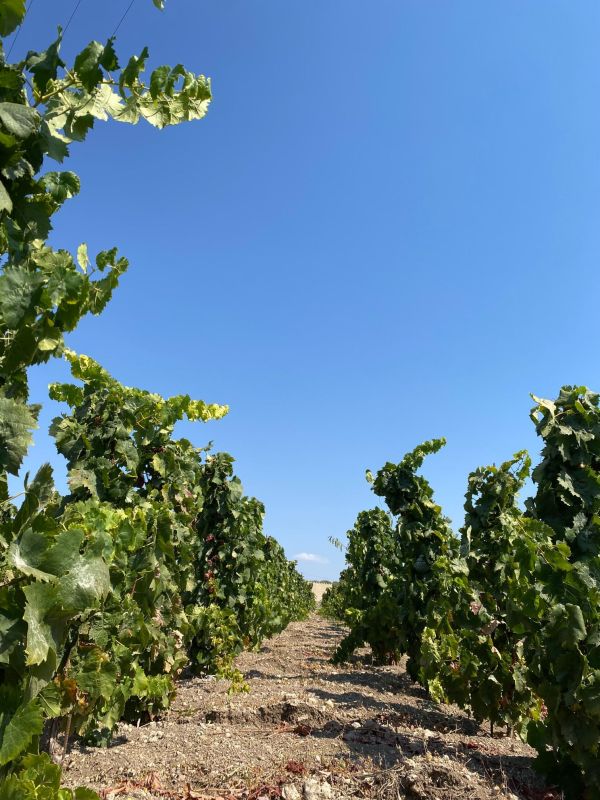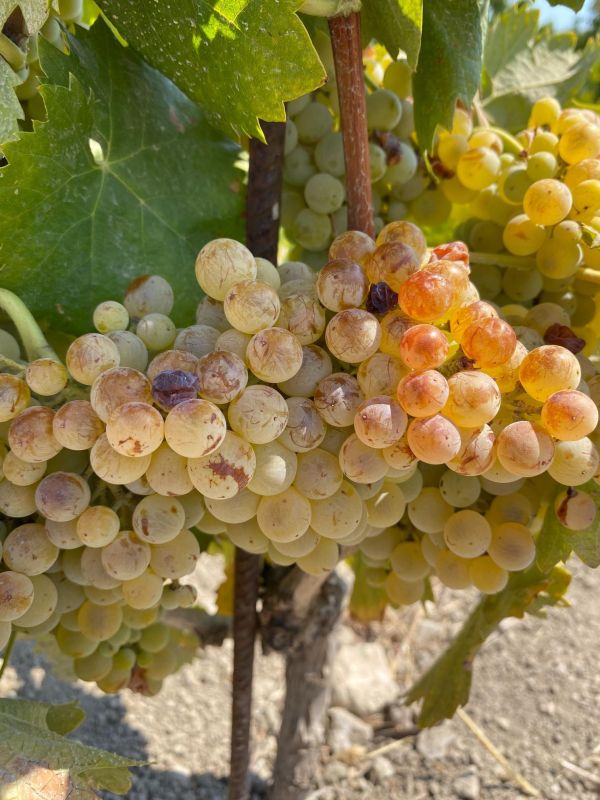Finally, we're done with our "2" harvest... I've always heard vignerons from the South explain that vintages ending in "2" are always a total shit-show. I've experienced two of them (1992 and 2002), and they had both lived up to their reputation: impossible to harvest at optimal maturity because of torrential rains that caused memorable flooding... Everything was rotting at unprecedented rates!
So we were expecting the worst with 2012, and this manifested itself with a ravaging hail storm in Brézème on the 7th of July. In 5 minutes, a tornado of hail massacred half of the whites and a third of the reds. It was somehow not nearly as bad as it originally looked, and we have to thank the Mistral for blowing this storm away over the next few days.
Still, we attacked our harvest with a positive attitude. Starting August 15th, a period of high heat helped heal and dry the grapes that had survived. The immediate result: the Chasselas from Saint Julien (destined for the "Rouletabulle") started maturing very quickly and we had to harvest them on August 24th, early in the morning to avoid the afternoon's scorching 38°.
Next was the Muscat on the 31st. After a first try that ended slightly moelleux (25g of residual sugar) that I disgorged last year, I'm going to attempt vinifying some of it dry (and non disgorged) this year.
My lab analysis on September 4th makes it clear we're going to have to kick things into high gear: acidities are very low, the grapes taste ripe and the reds' juice is starting to take color. On September 10th, we start with Saint Julien's Serines. Next up, the Brézème: first the white, then the red. The hail damage is serious: 30 to 50% of the grapes exposed west are completely dried out, so a lot of first pass sorting is necessary. We then tried eliminating a lot more grapes with a second pass on the sorting table, but quickly realized that we weren't going to get these dried out grapes off without destemming.
So for the first time since 2003, the Brézèmes are 100% destemmed. We kept the stems to eliminate the dry grapes (this is a lot easier once the good grapes have been removed) and reincorporated about 25% of them in the cuve. And because there was still a little bit of dry grapes left in there, I decided to cut the cuvaison time as soon as the sugars had fully fermented (between 12 and 16 days after they'd been tanked).
Once we'd actually pressed and started vinifying the wines, we were able to have an idea of the actual hail damage: we lost 50% of the Roussanes (but strangely none of the old vines) and 20% of the Syrah compared to a normal vintage. It's hard to complain when you know how much worst it was for some of our friends...
After Brézème, we returned to Saint Julien for the Grenaches and the whites. It's a miracle! Nothing dried out, nothing rotten. The harvest is copious and of good quality. Acidities are a little moderate, but low alcohol and superb maturity. These will produce easy and ready to drink wines. I even considered making a primeur for the first time in my life!
The next Monday morning, all of Brézème and Saint Julien have been harvested and in the tanks! In the end, I am relieved to see how much we were actually able to harvest.
On Friday, the 21st, we all set out to Bussières. The weather is beautiful, though a bit cold in the morning. Still, I love that fresh, morning ambiance, the colors of fall surrounding us while we harvest. It's such an incredible energy, and unfortunately, every year global warming is making our harvests more and more precocious, stripping me of these moments. The grapes are fantastic and the juice is excellently balanced.
Taking a break in Charnay, we got to see our Beaujolais buddies harvesting the little bit of grapes 2012 decided to leave them. But even though the juice is rare, it's beautiful!
Wednesday the 26th: Châteauneuf. It's hot out! The Clairettes and Bourboulenc are in good shape, and we harvested them a whole 15 days later than last year. Unlike Brézème, the time lapse between flowering and harvest is normal here. The following Monday, we harvested the reds (a lot of sorting since maturities varied greatly), then we were off to Saint-Joseph and Côte-Rotie. Over there, no illness or hail: a lot of clean, ripe grapes with low acidity and low alcohol.
This year really reminds me of 2000, minus the low yields because of hail. It was also a vintage where I learned a lot about mildew, and I have many swiss vignerons to thank for sharing their experiences using herbal cures such as bourdaine.
I was surprised and touched by the solidarity of my fellow vignerons dealing with the elements in 2012. It makes me remember the wise advice Christian Chaussard gave me about black rot over a beer in Stockholm last May. Thank you Chocho for your bright, pertinent rationalities in this complex world of viticulture and naturally made wine.
